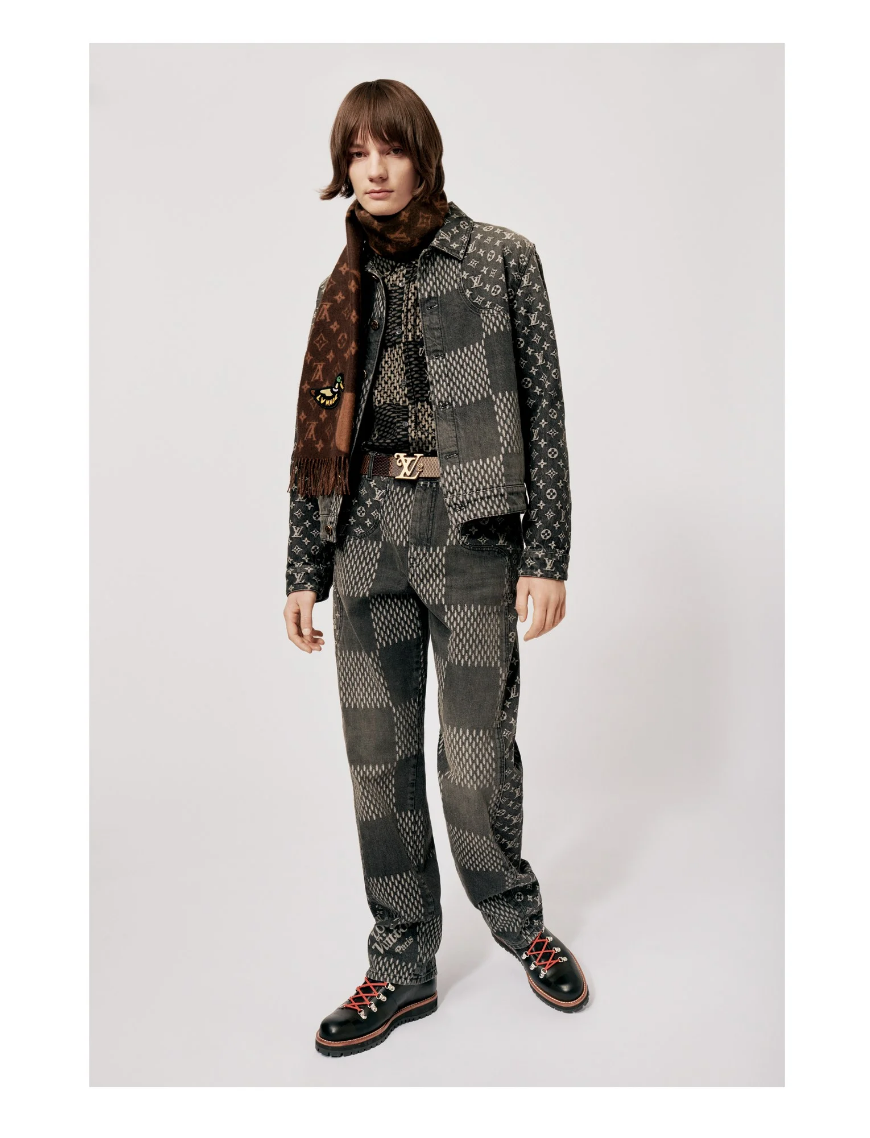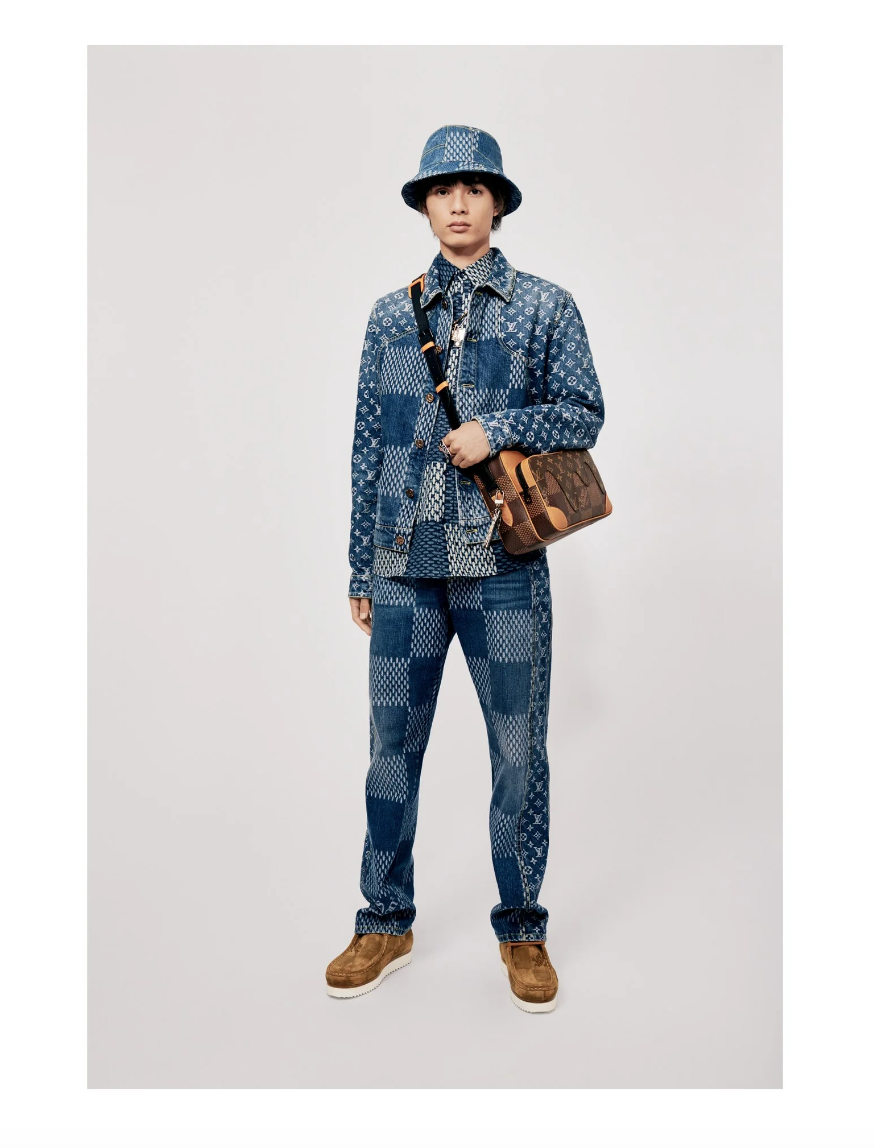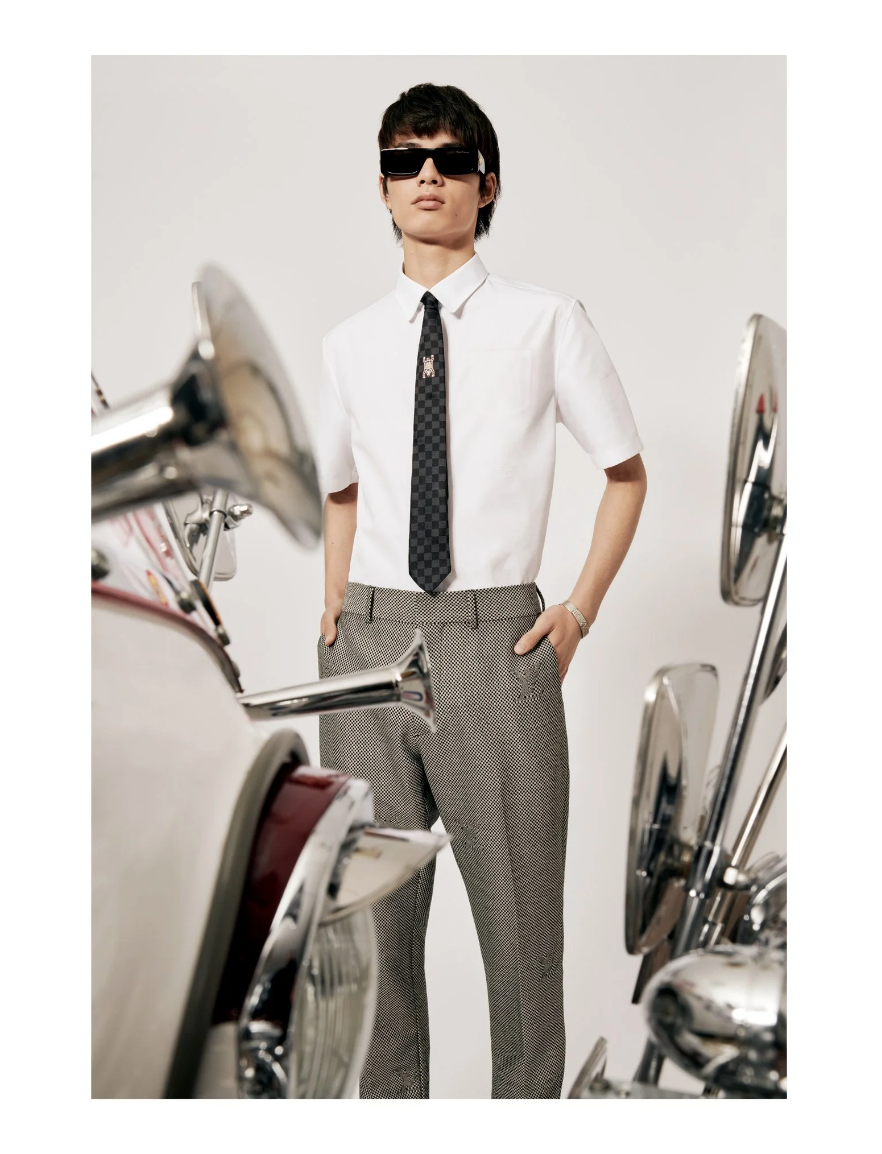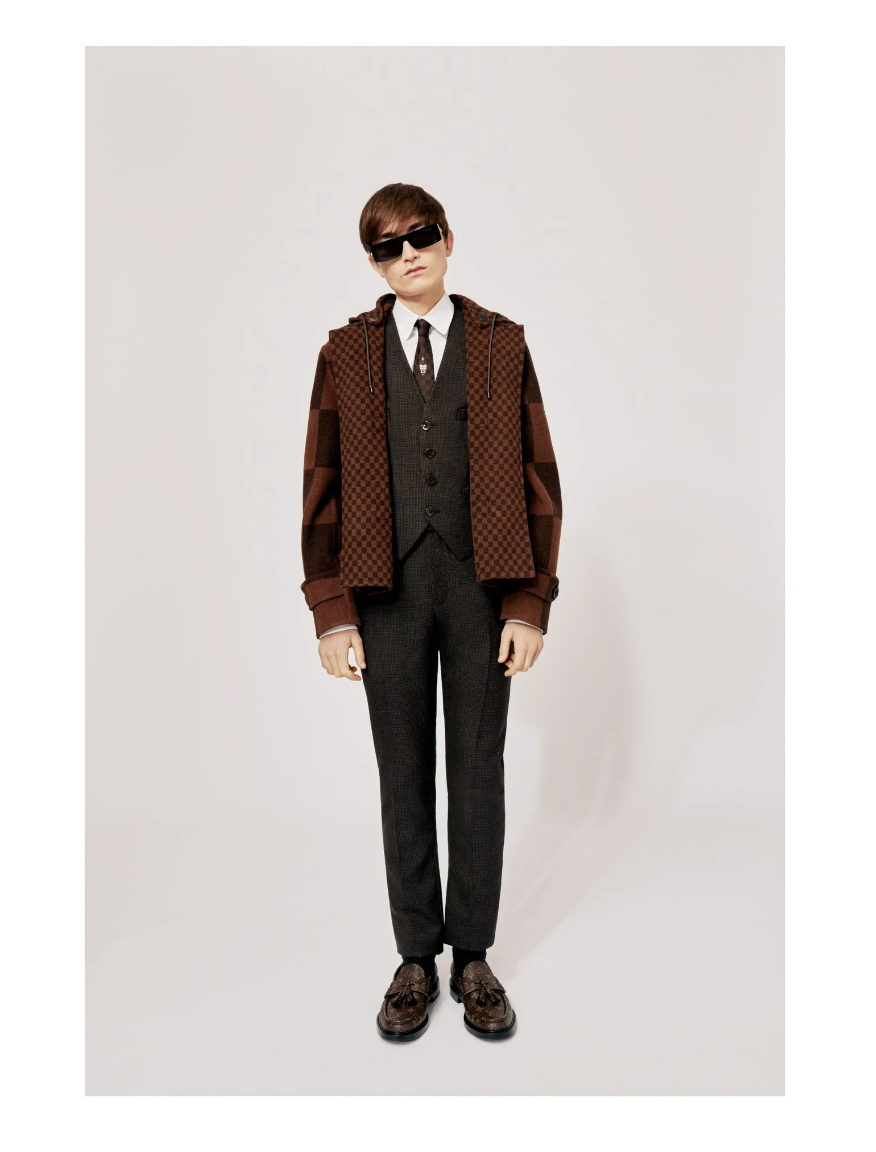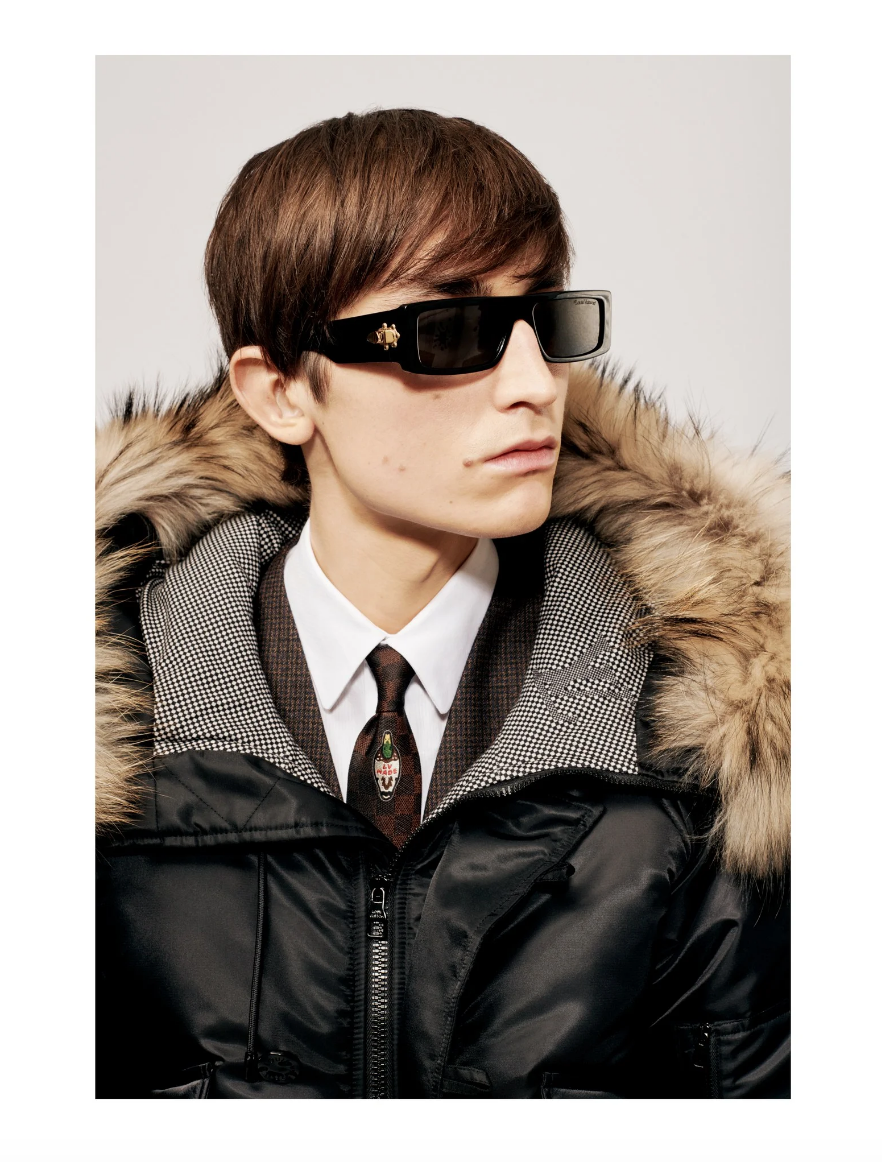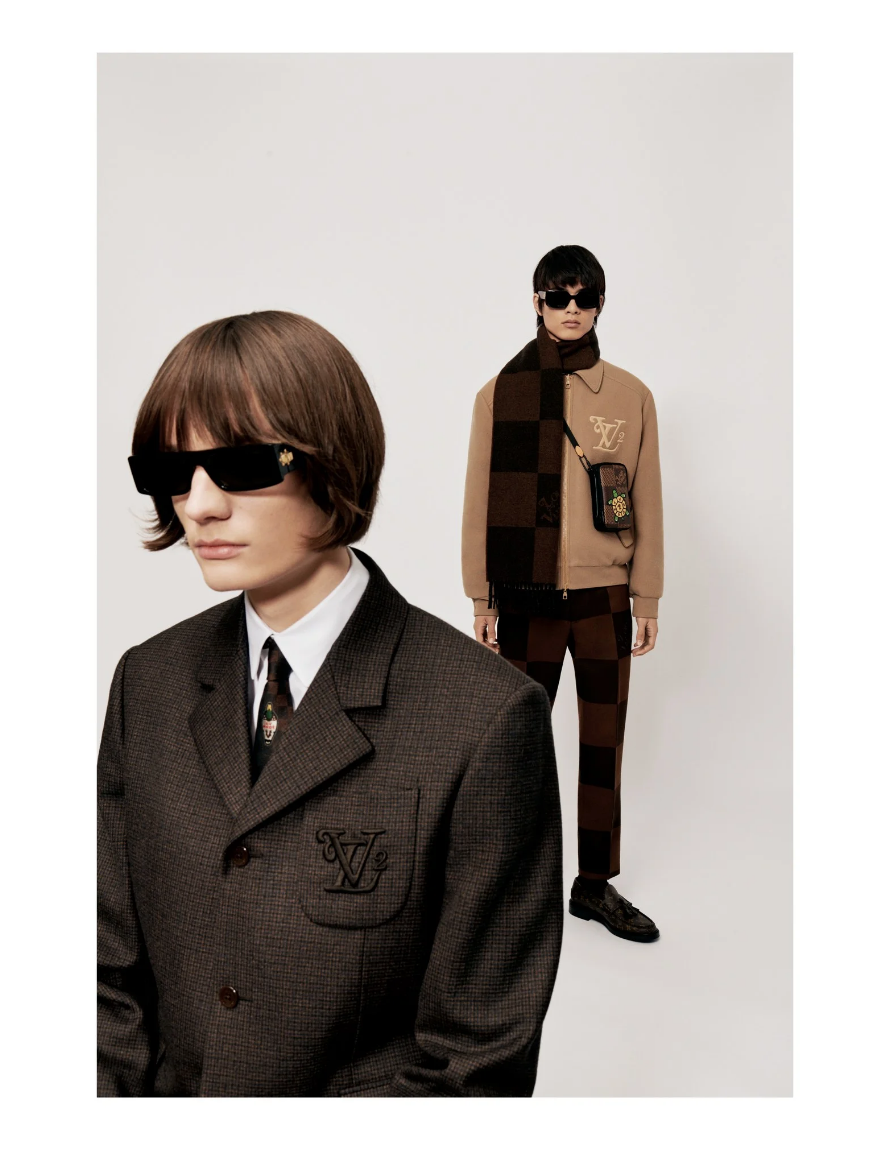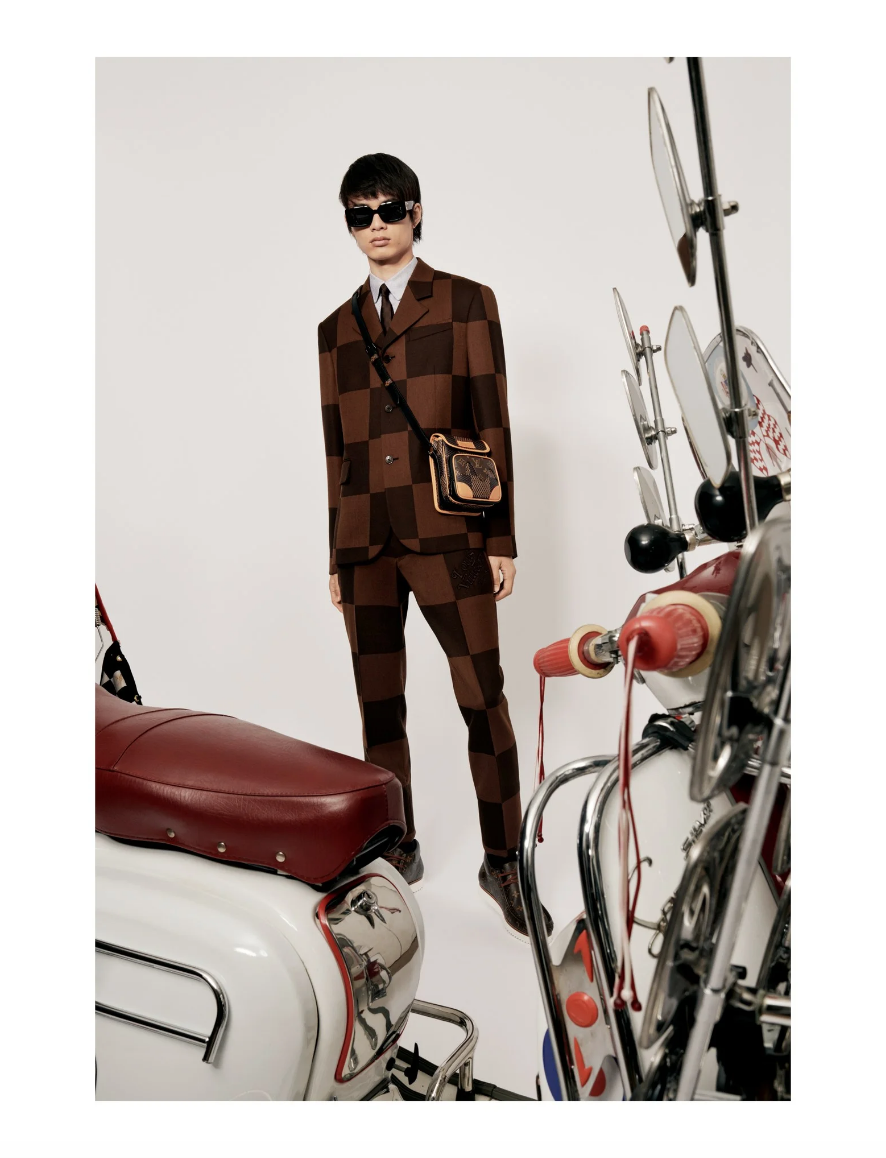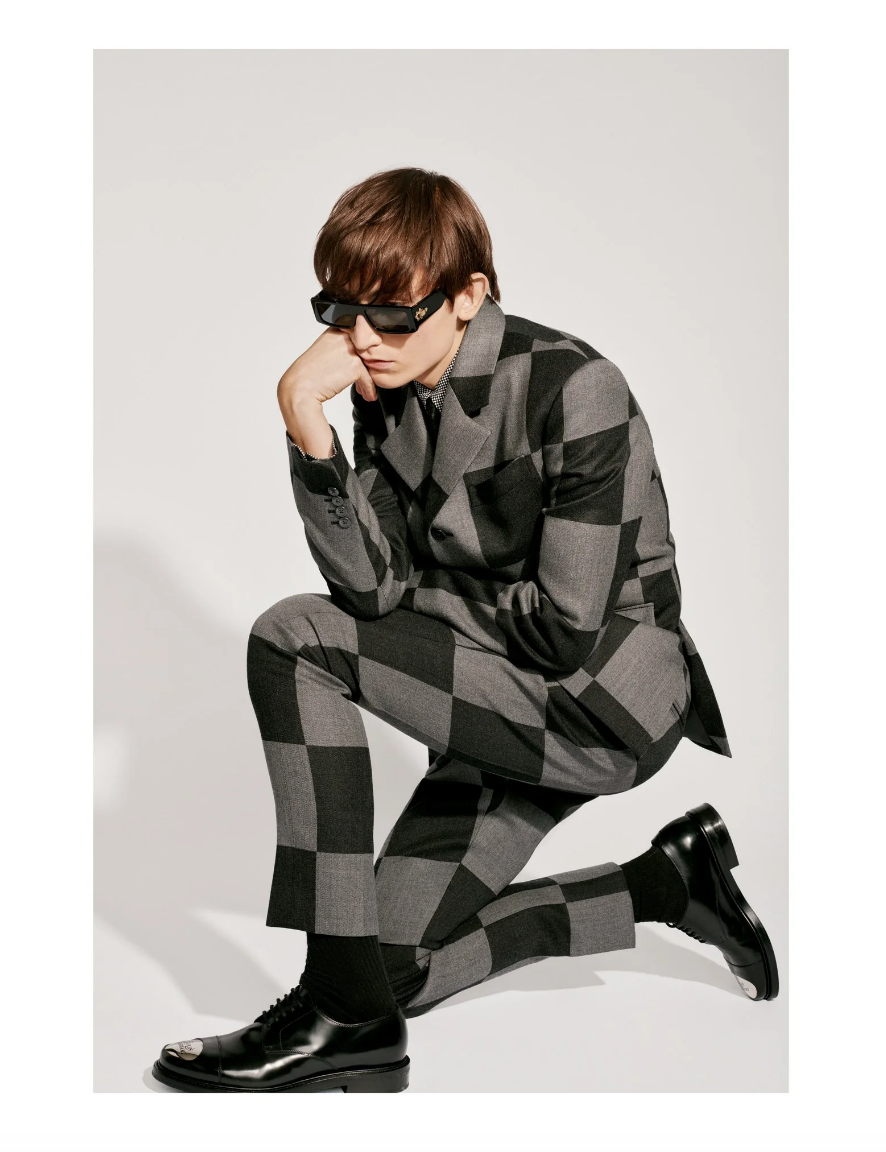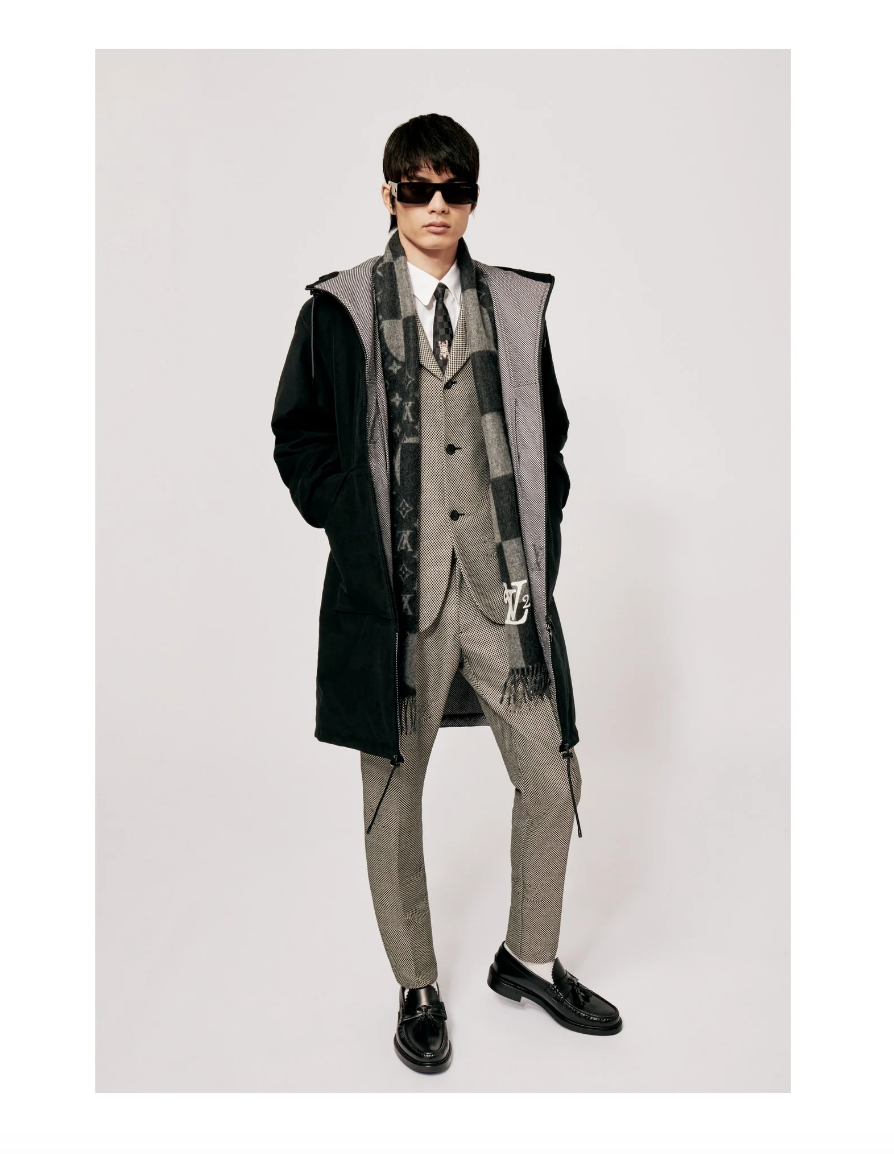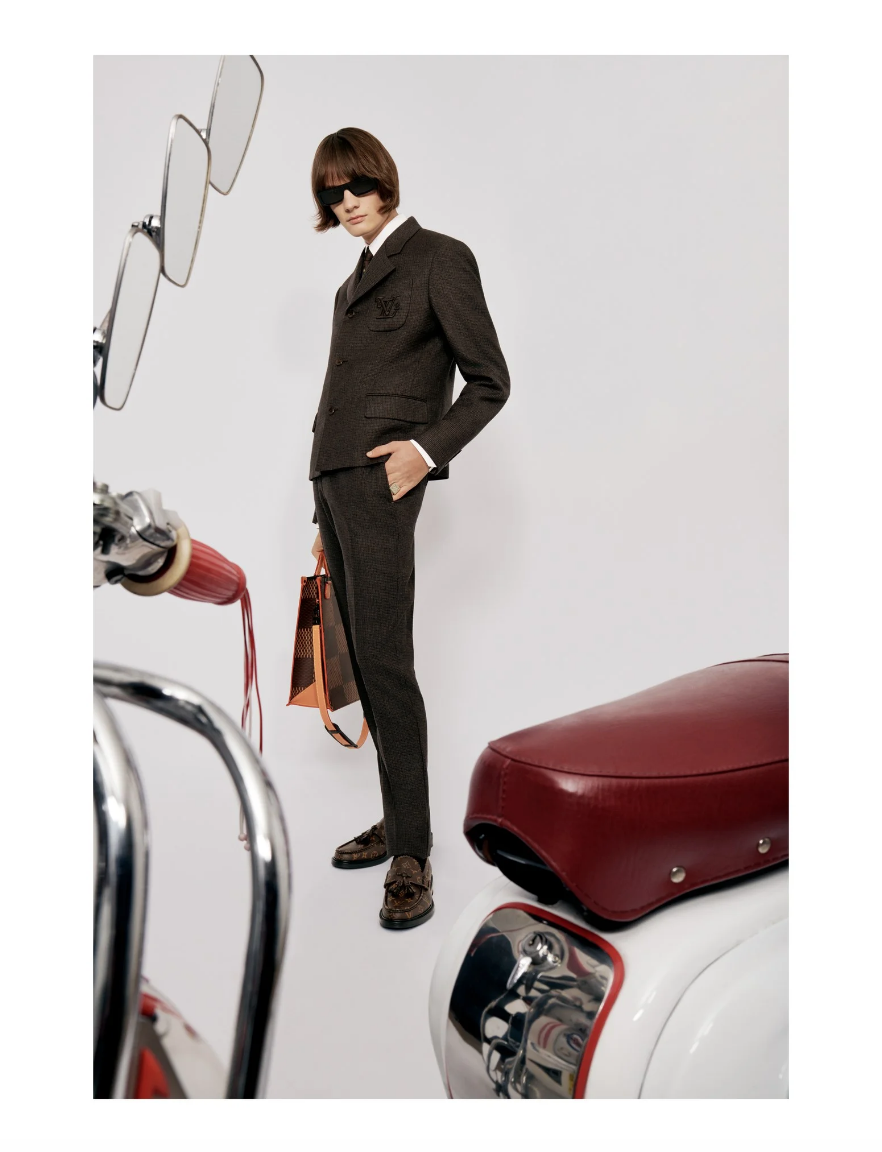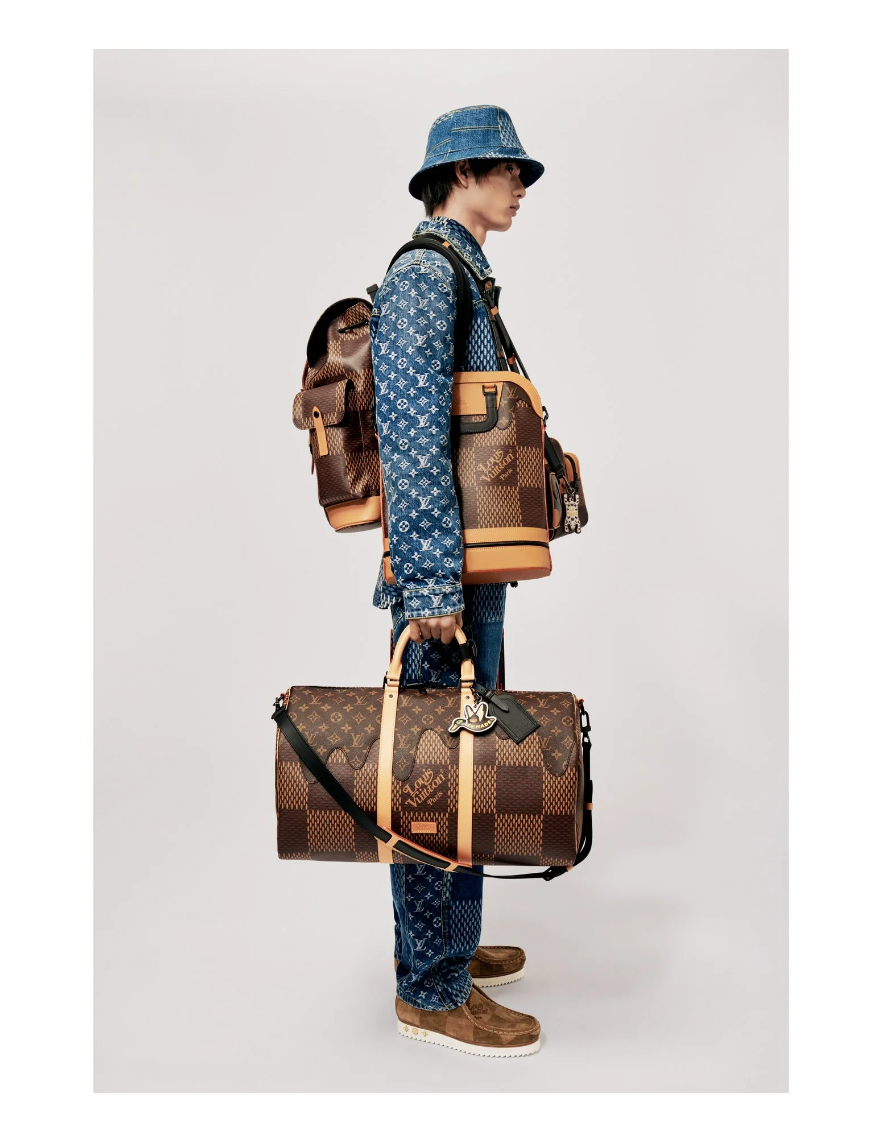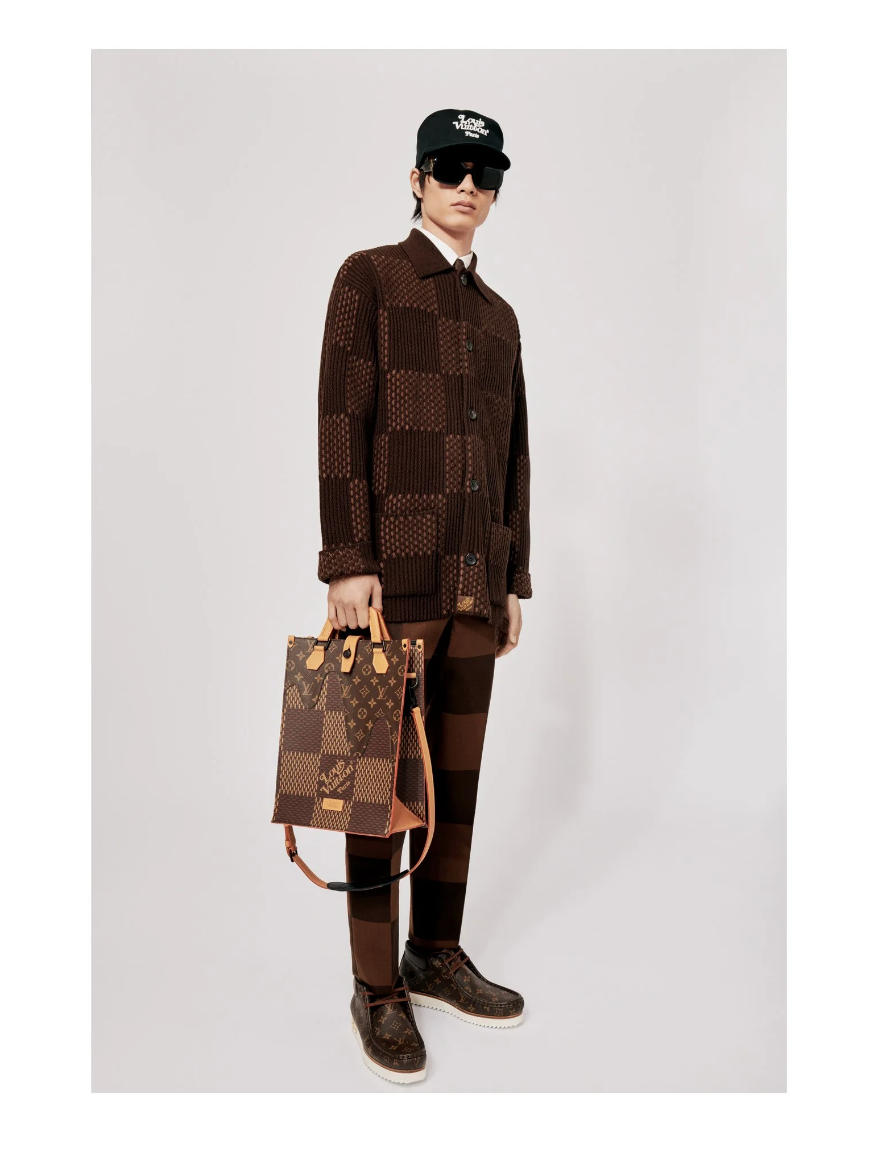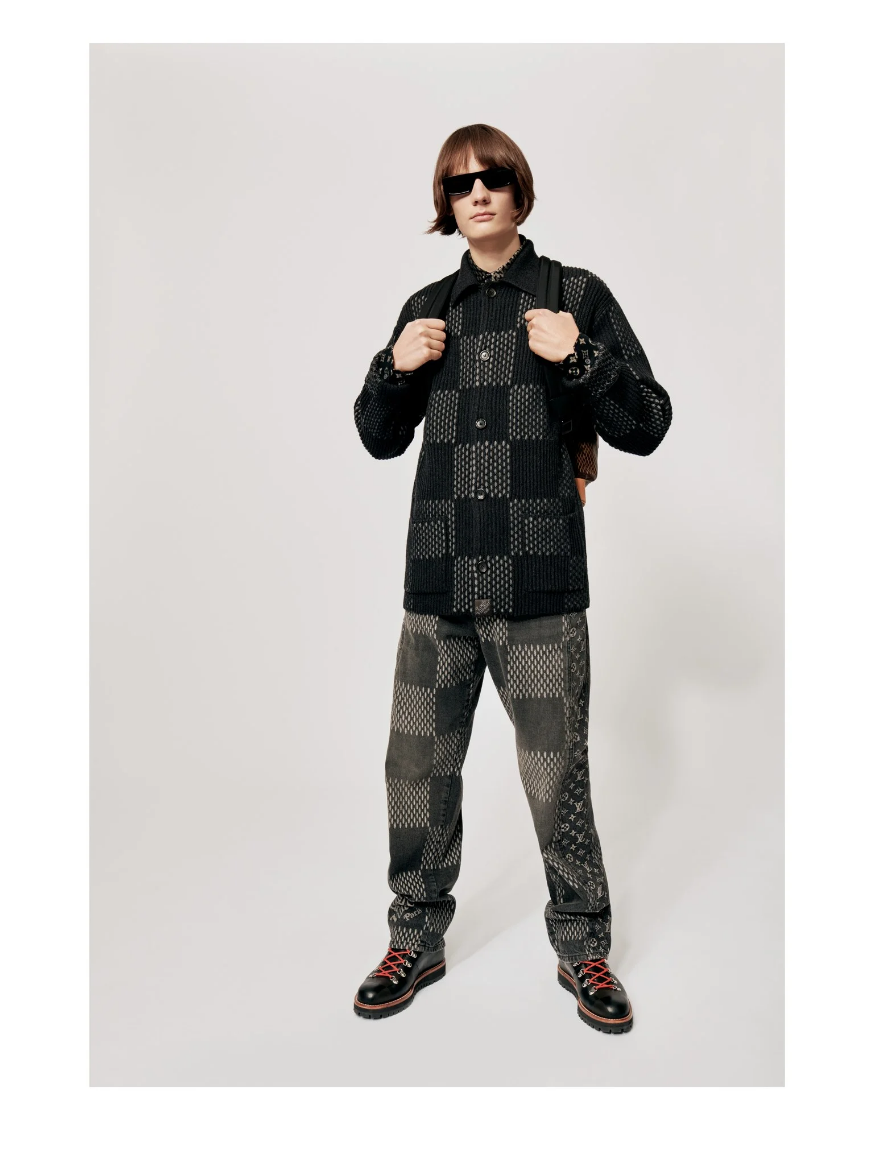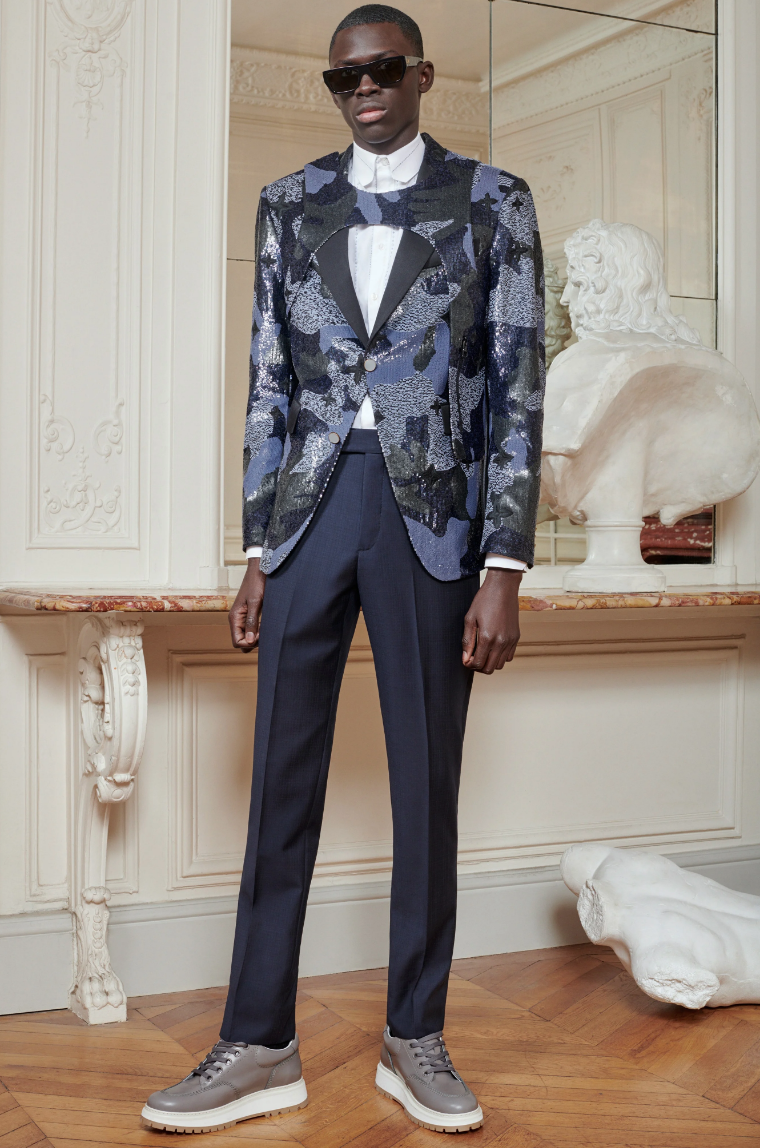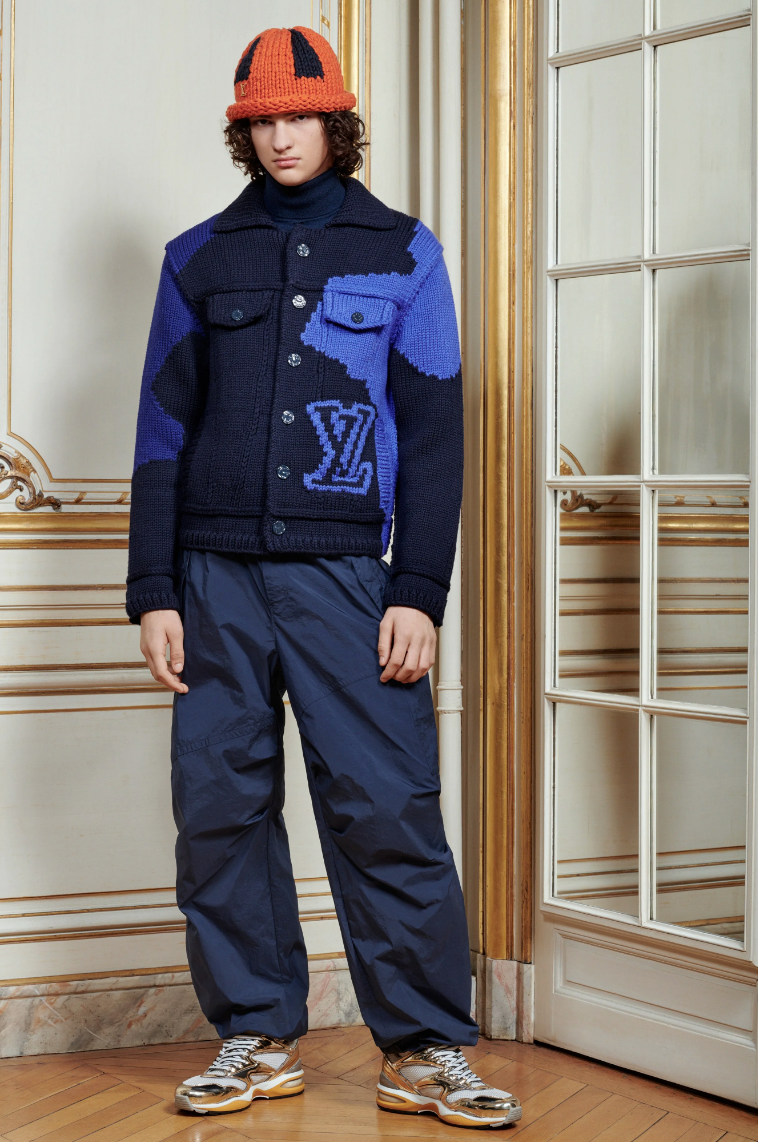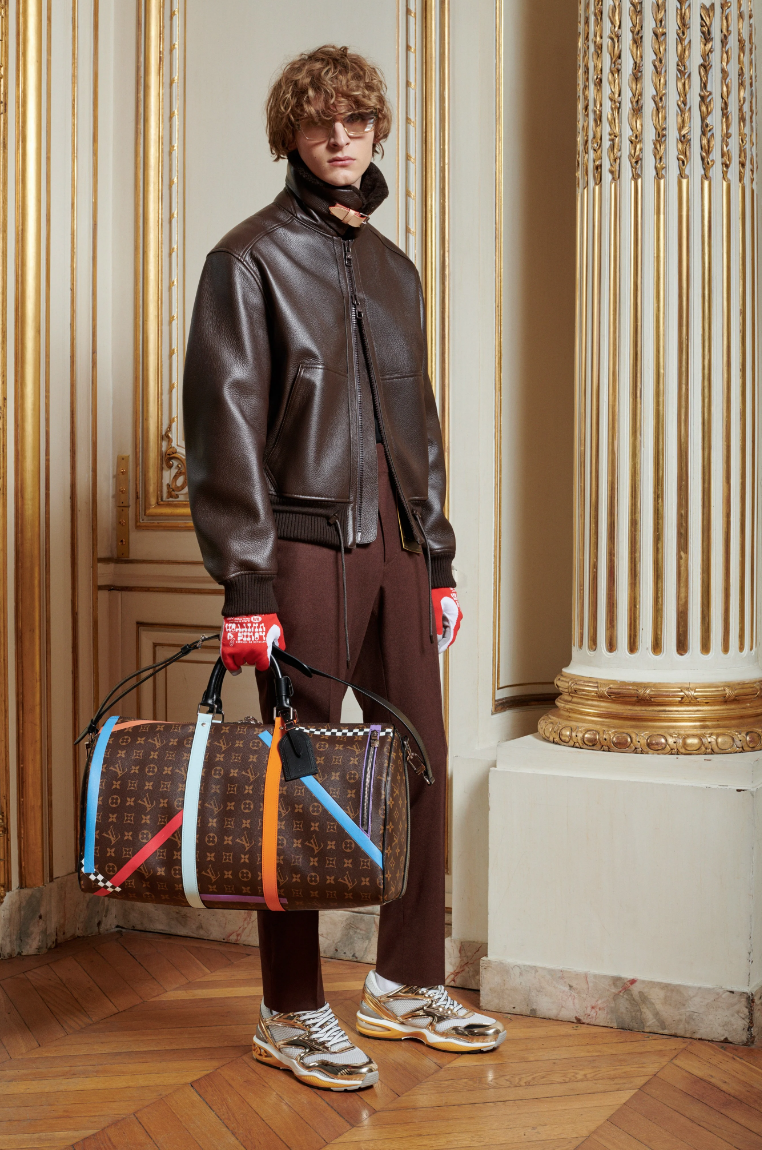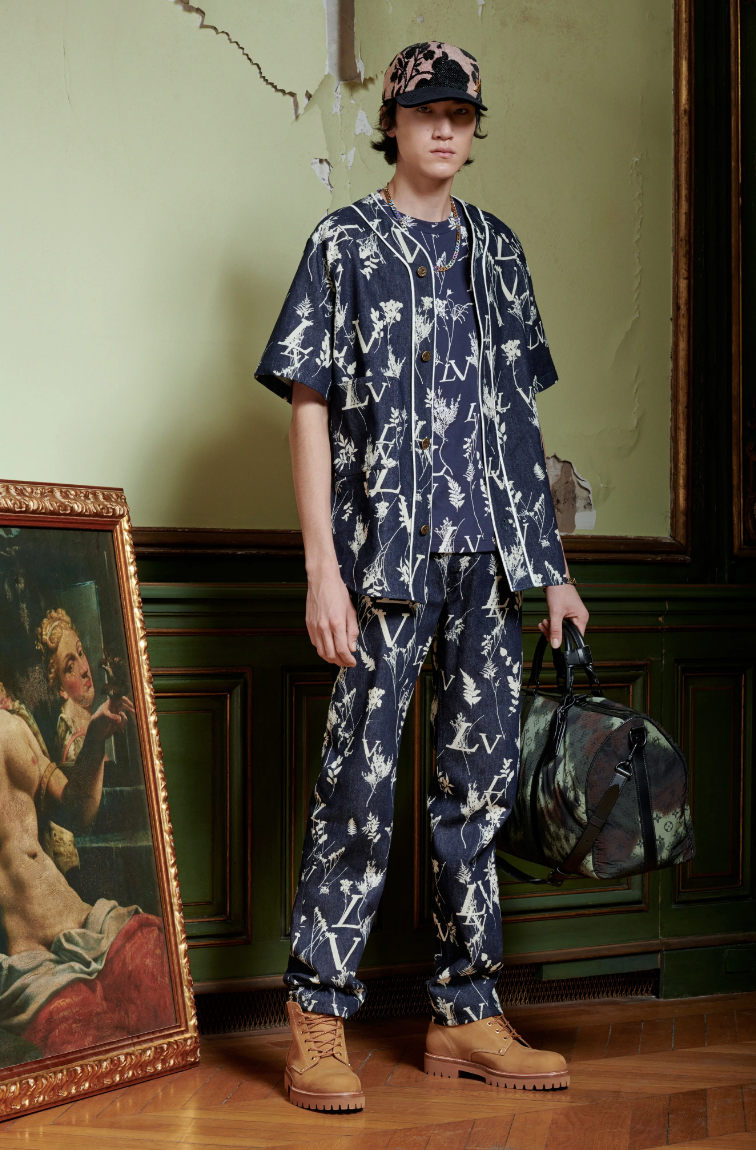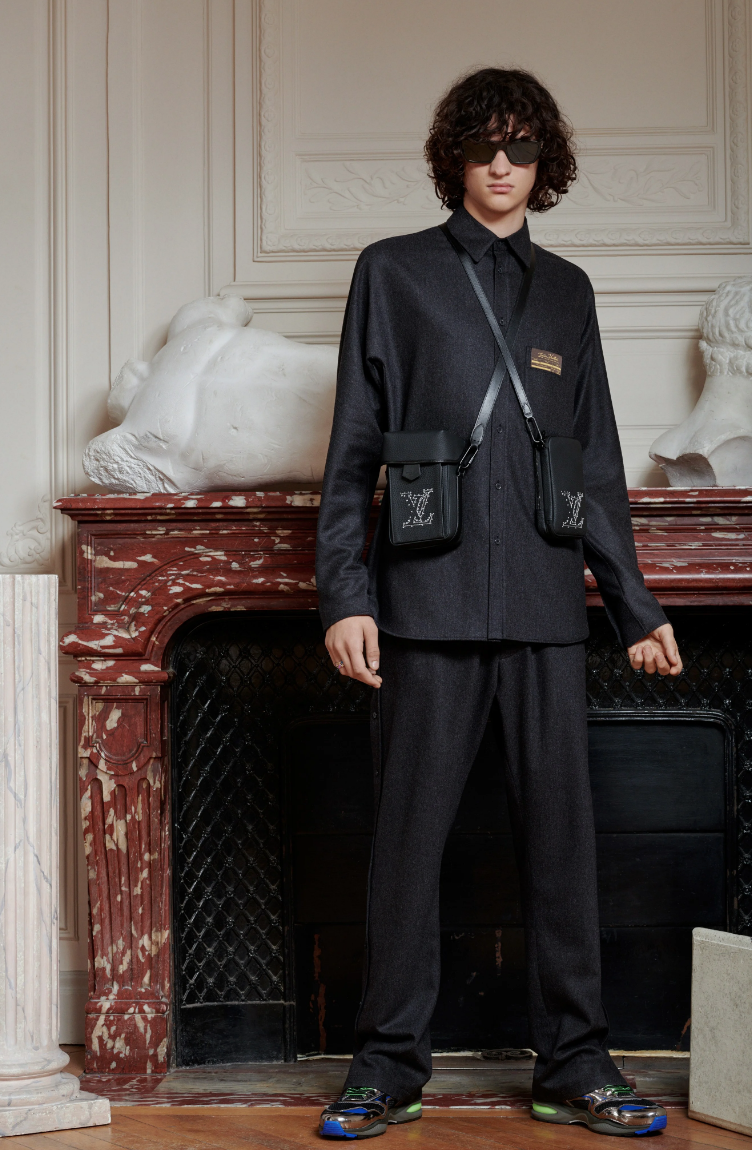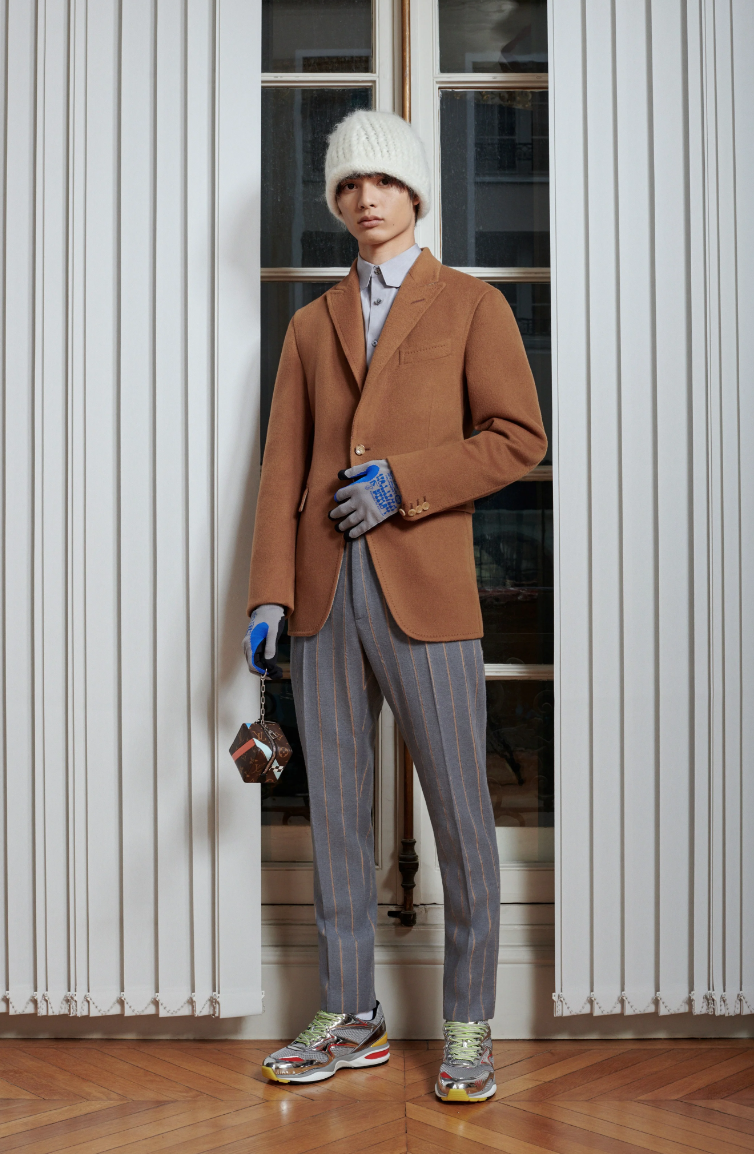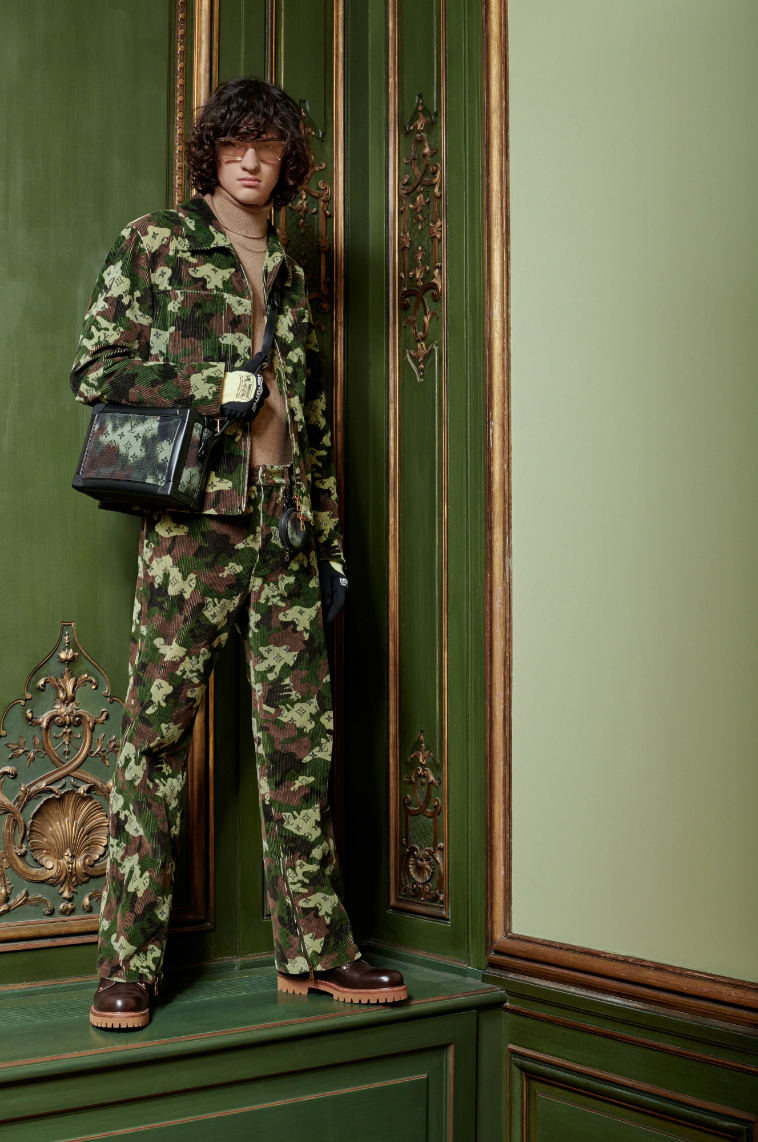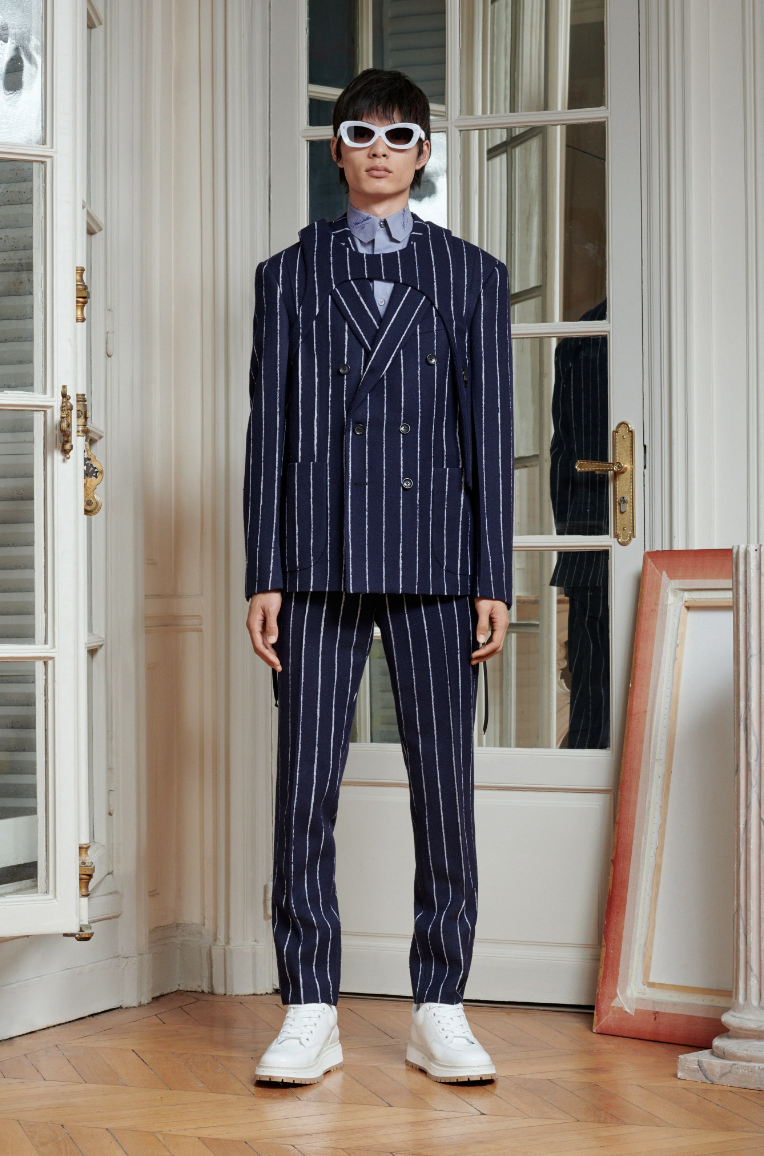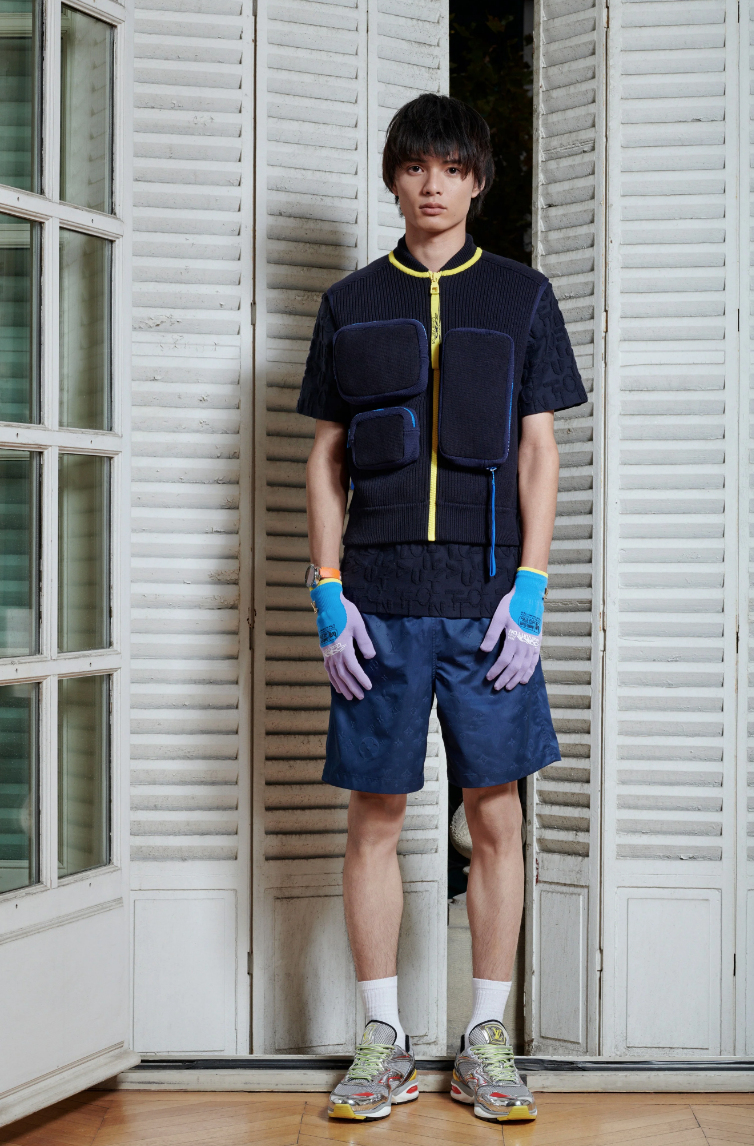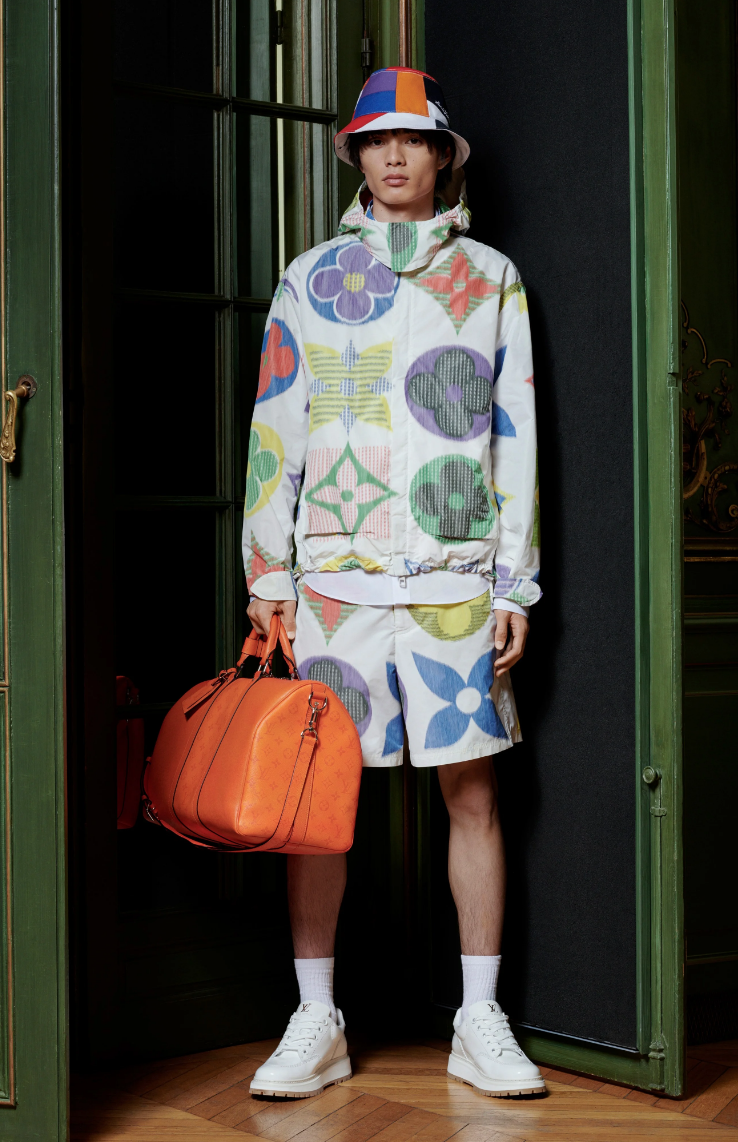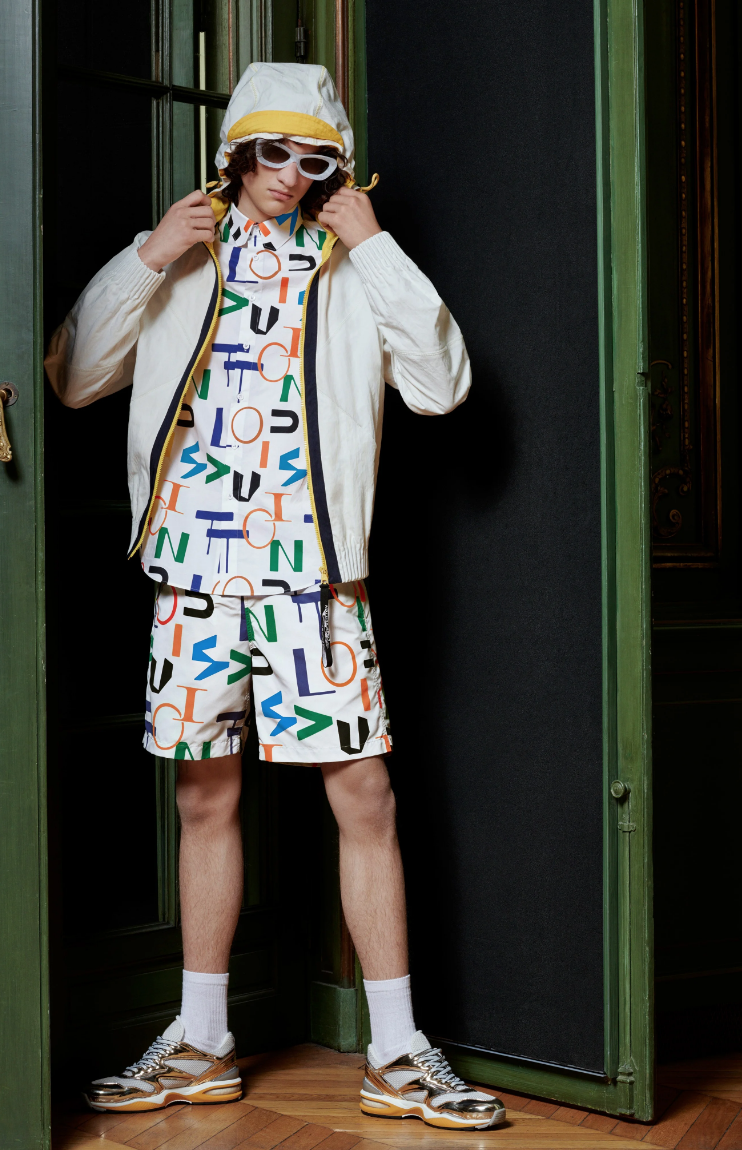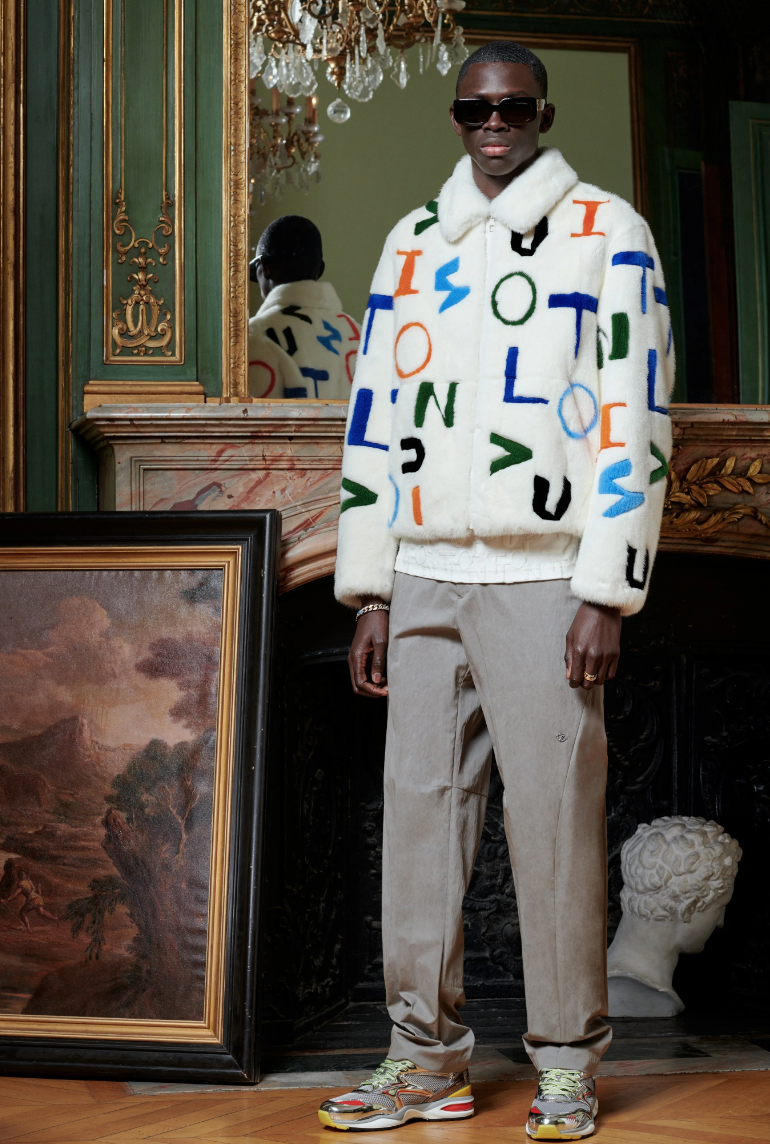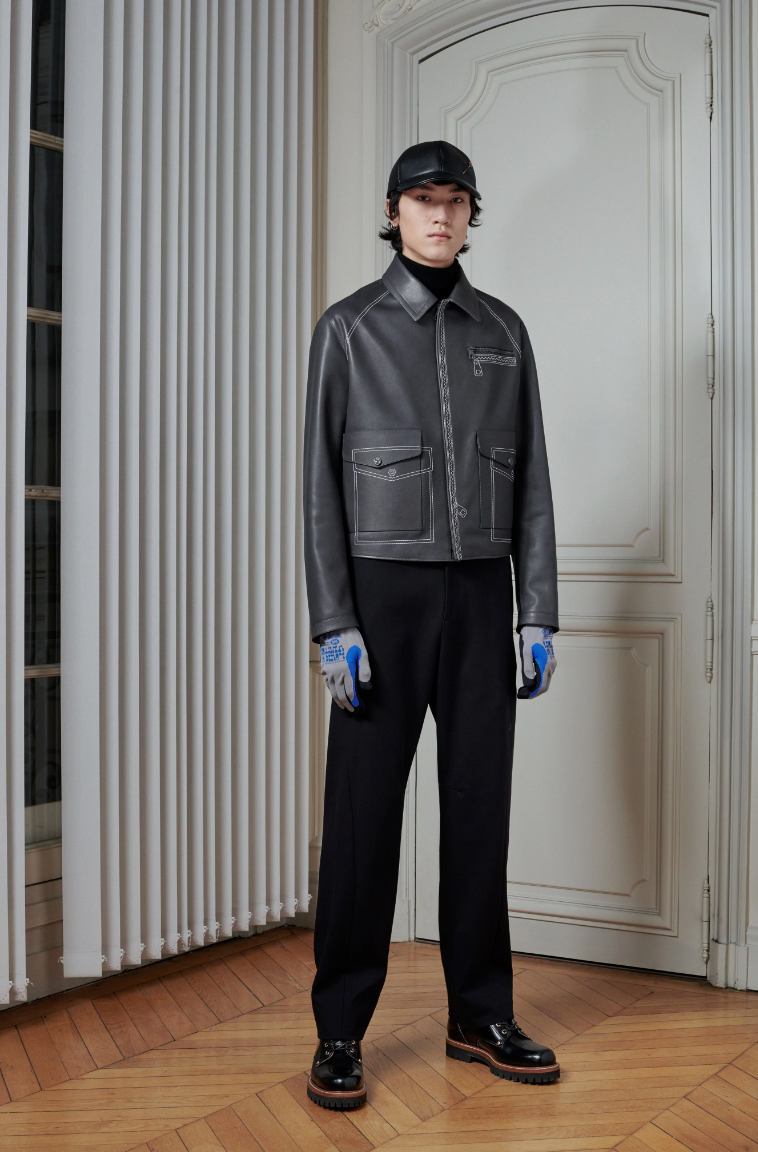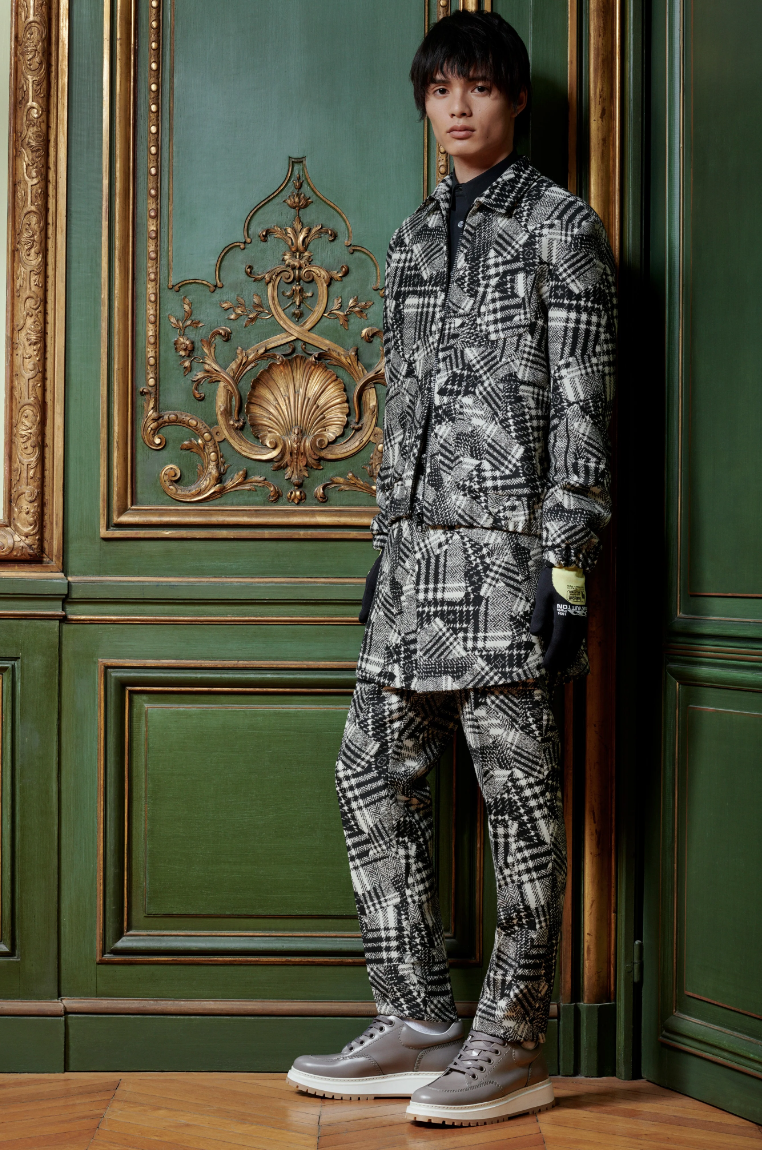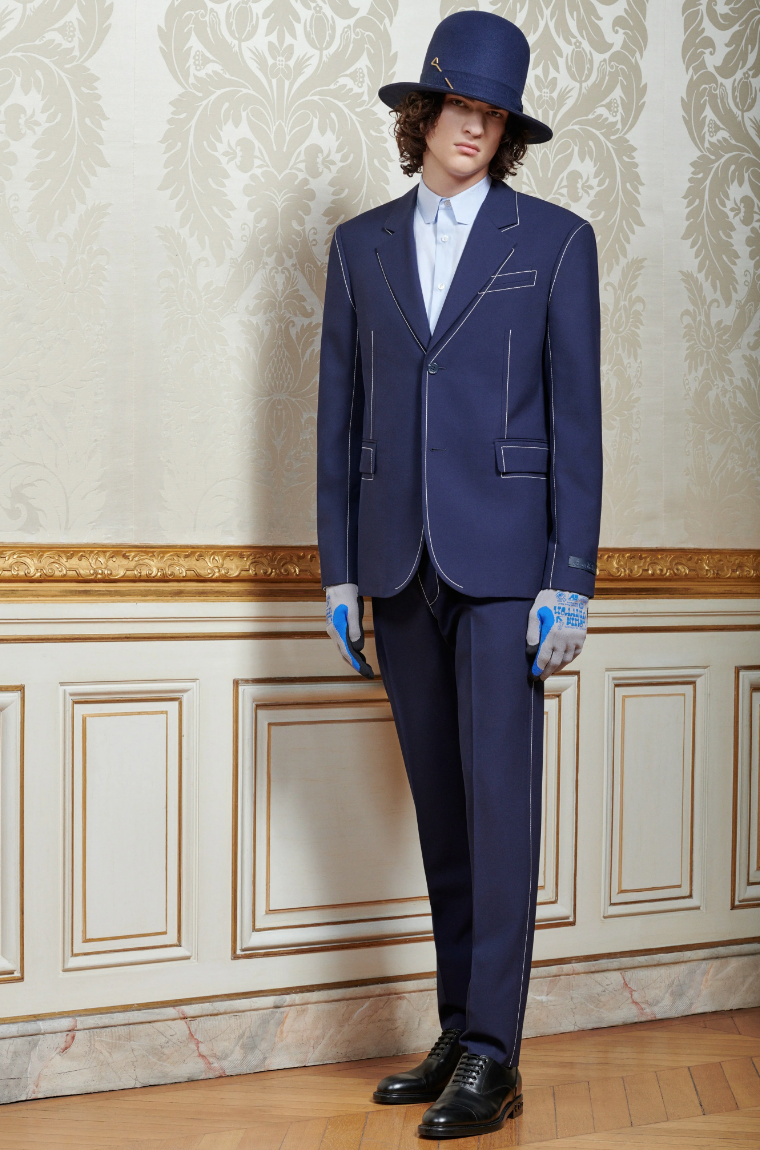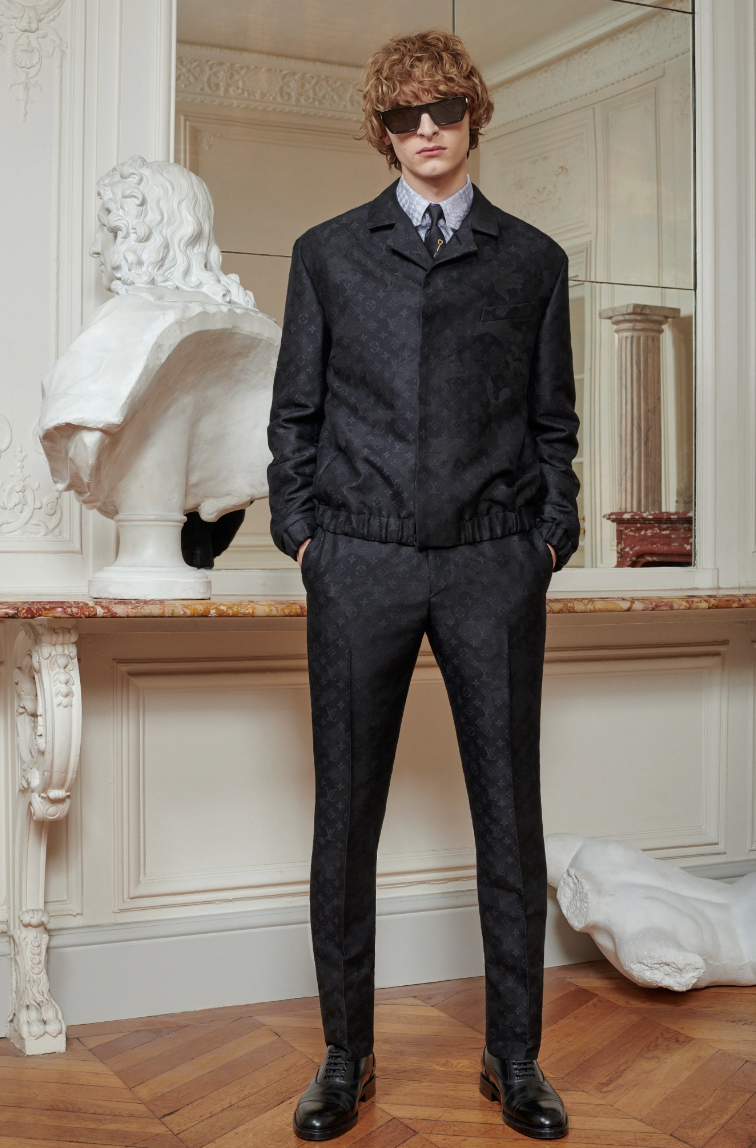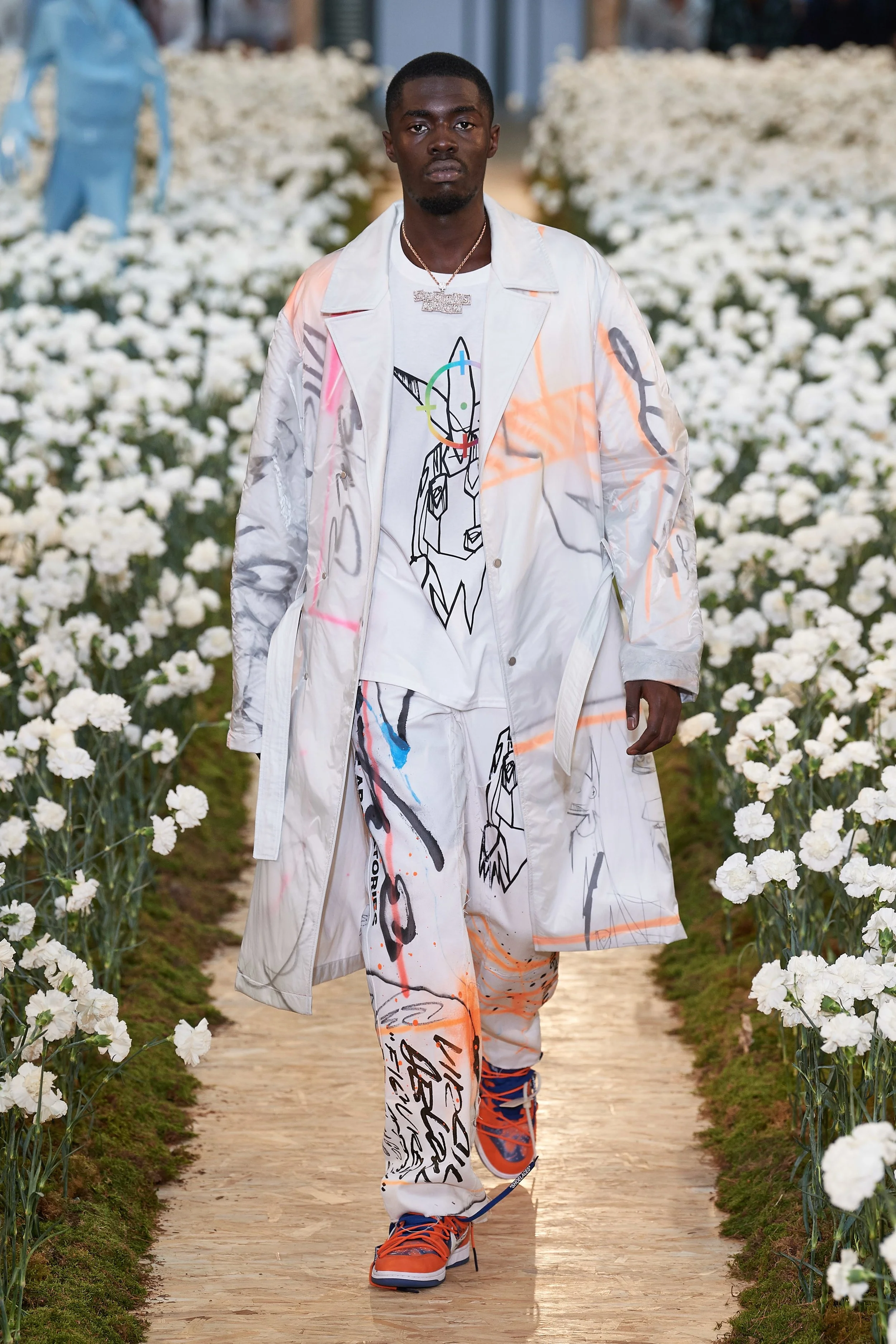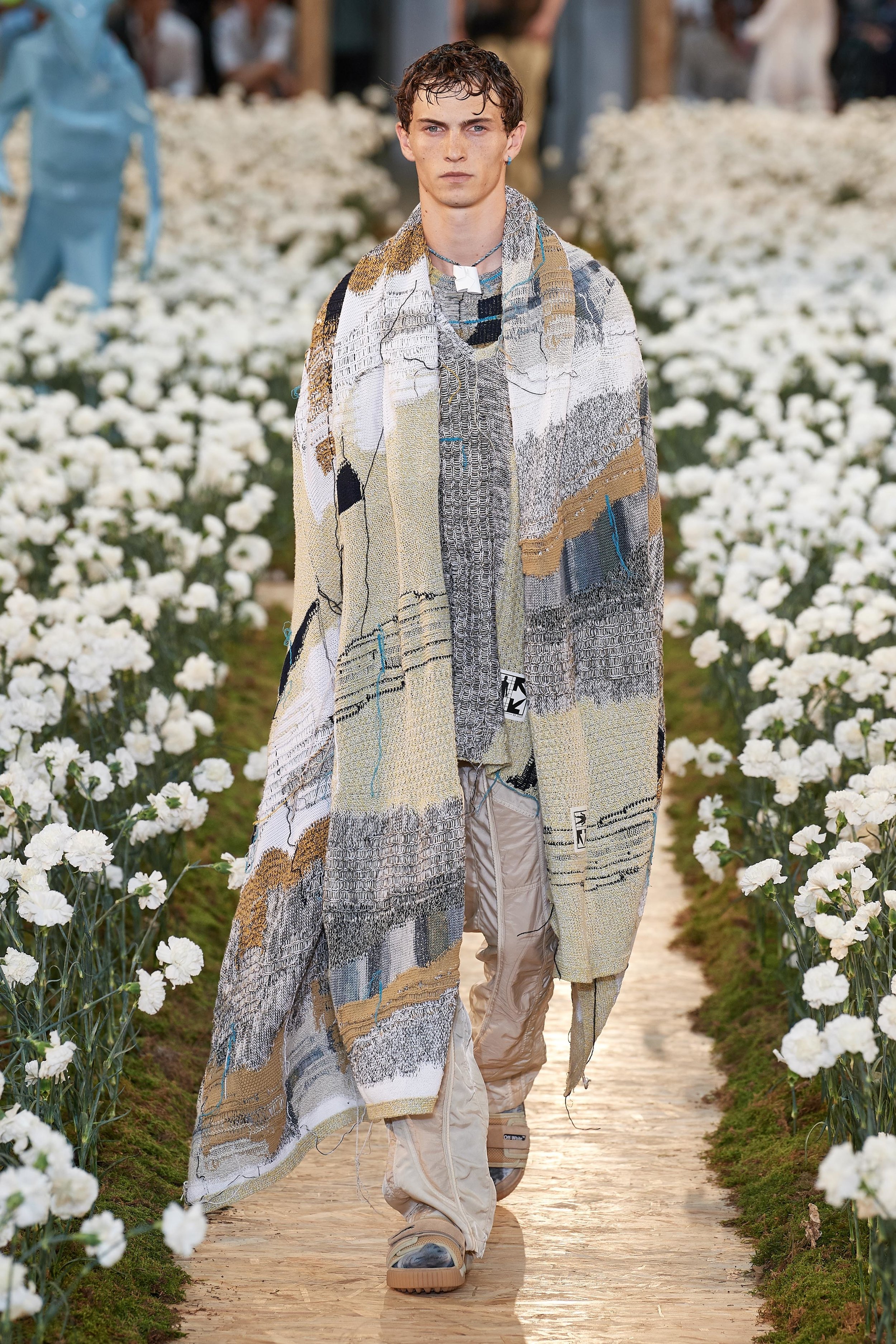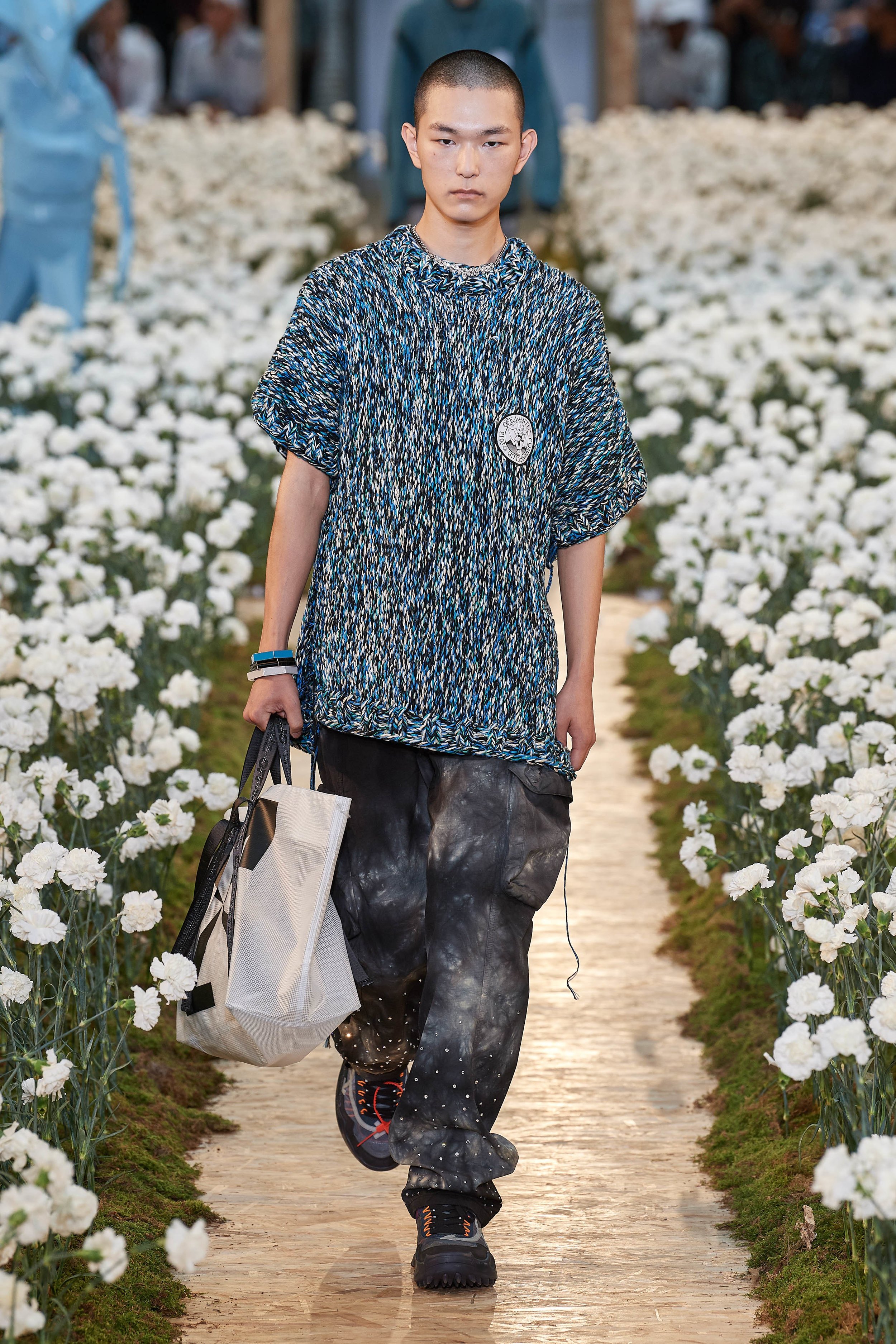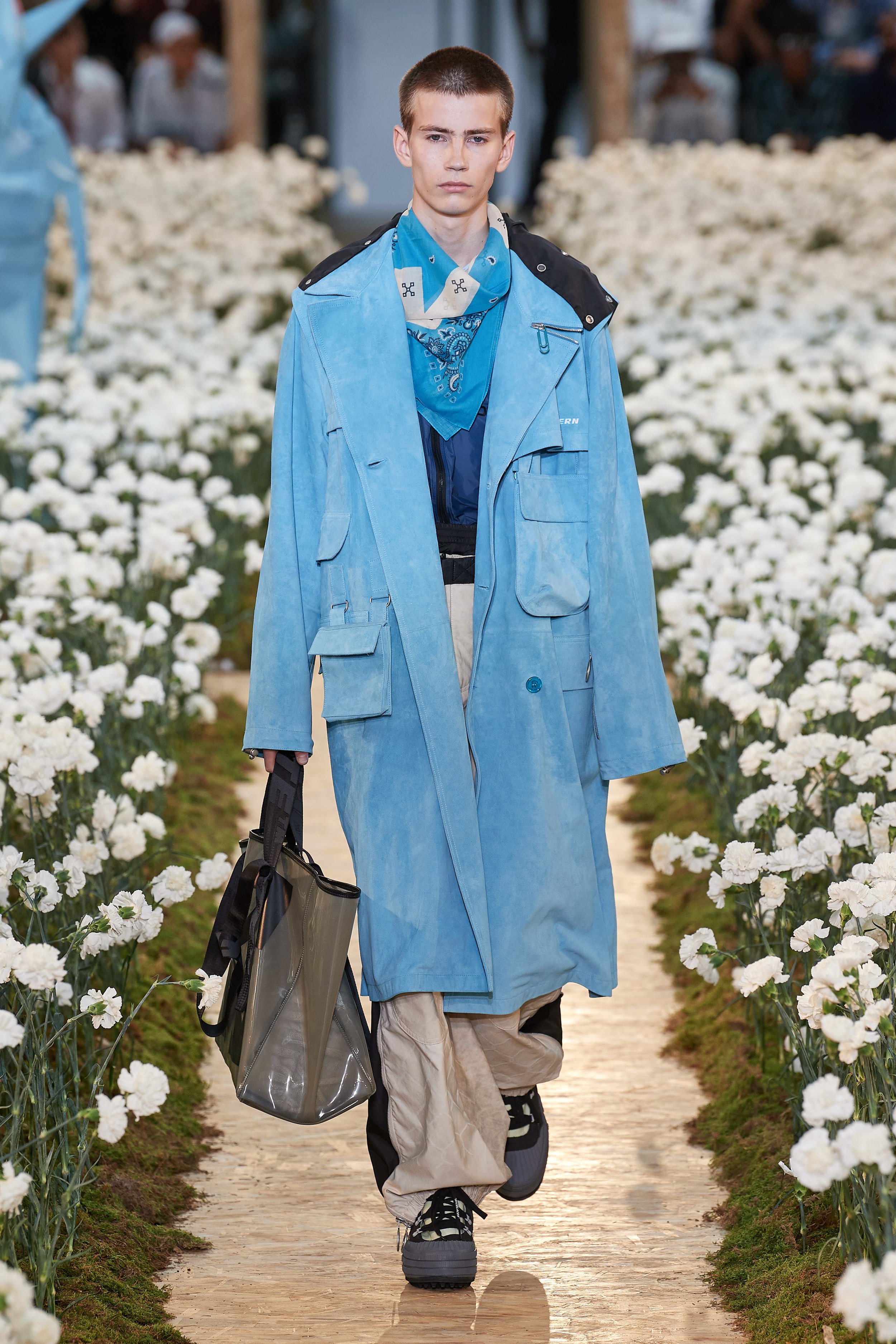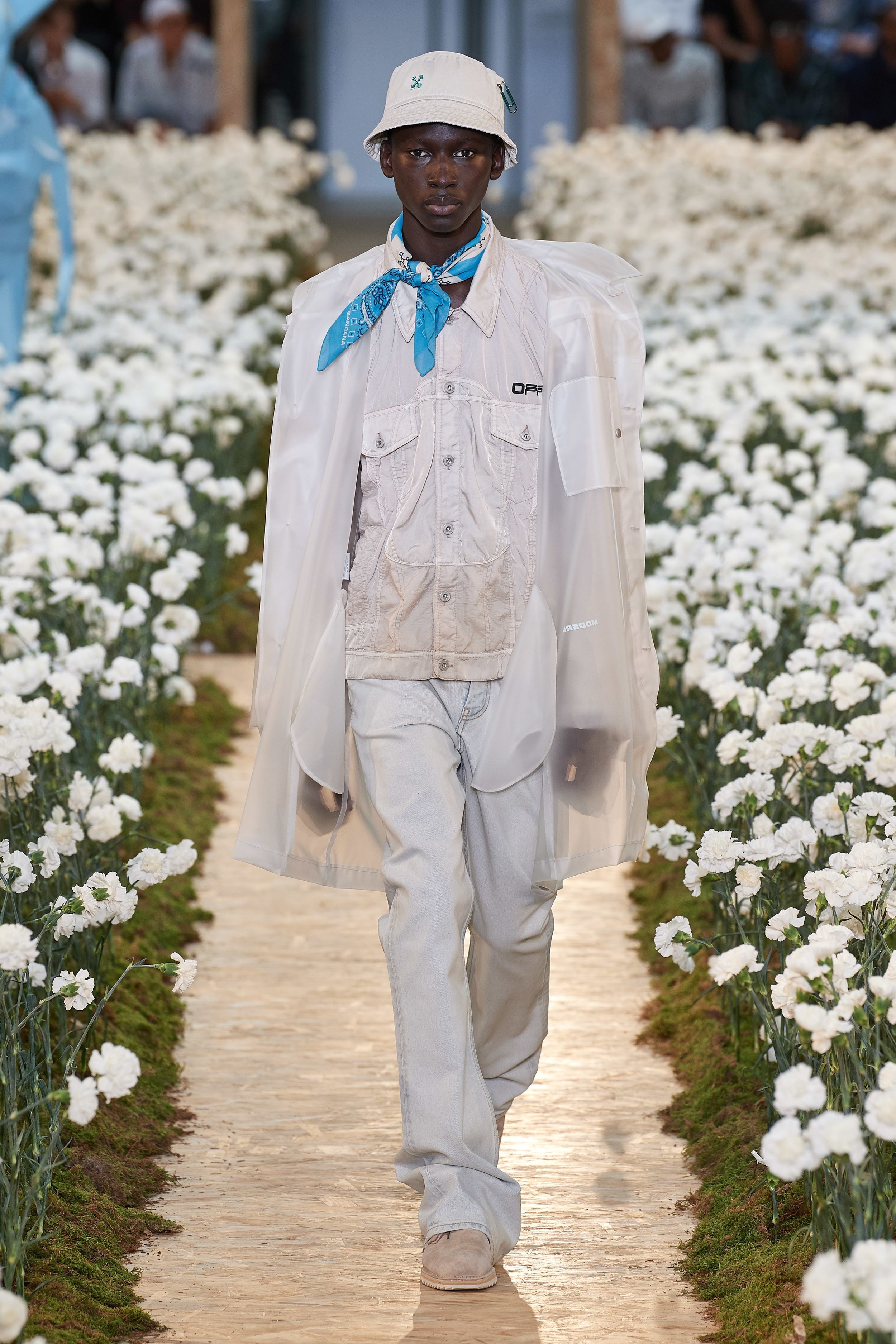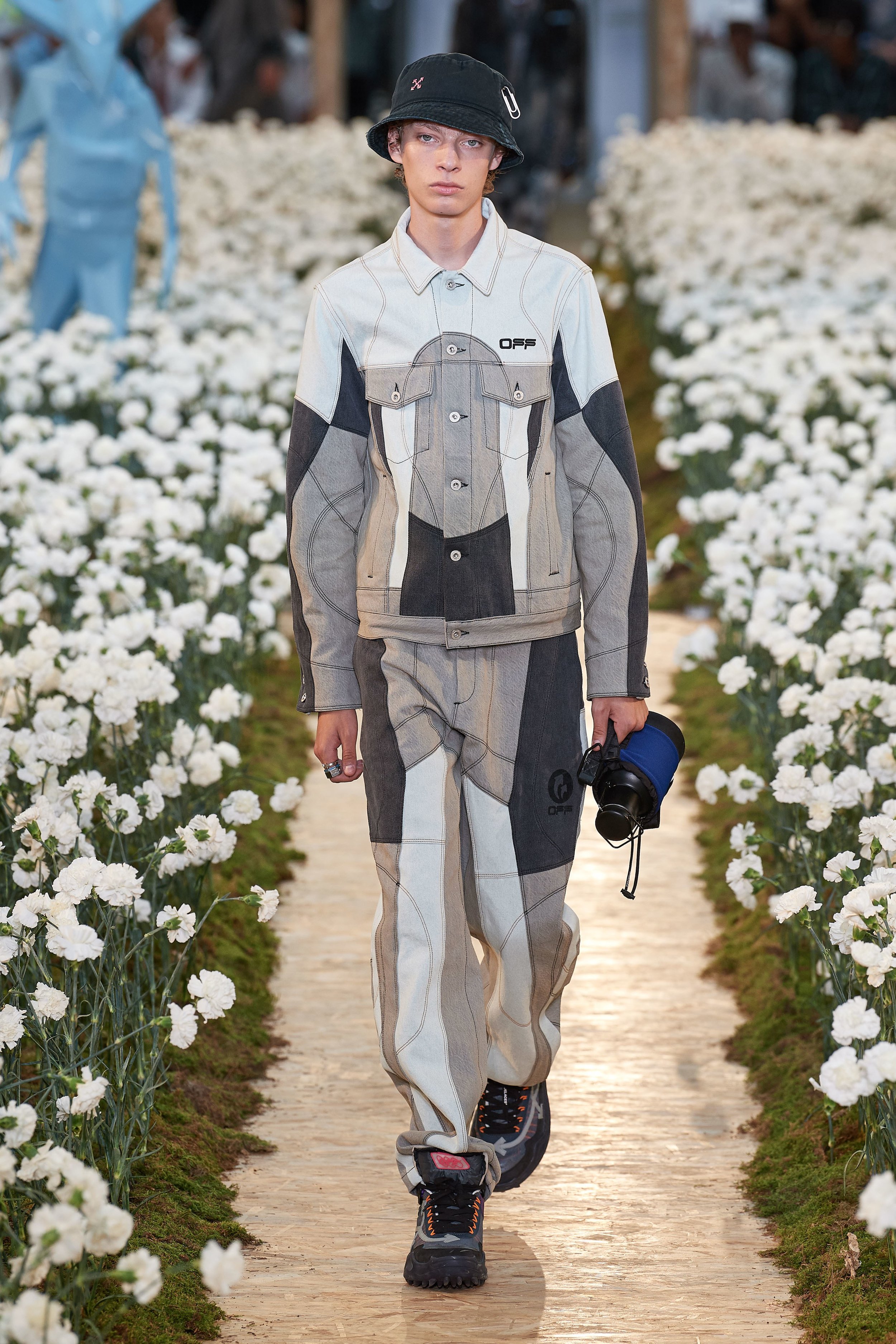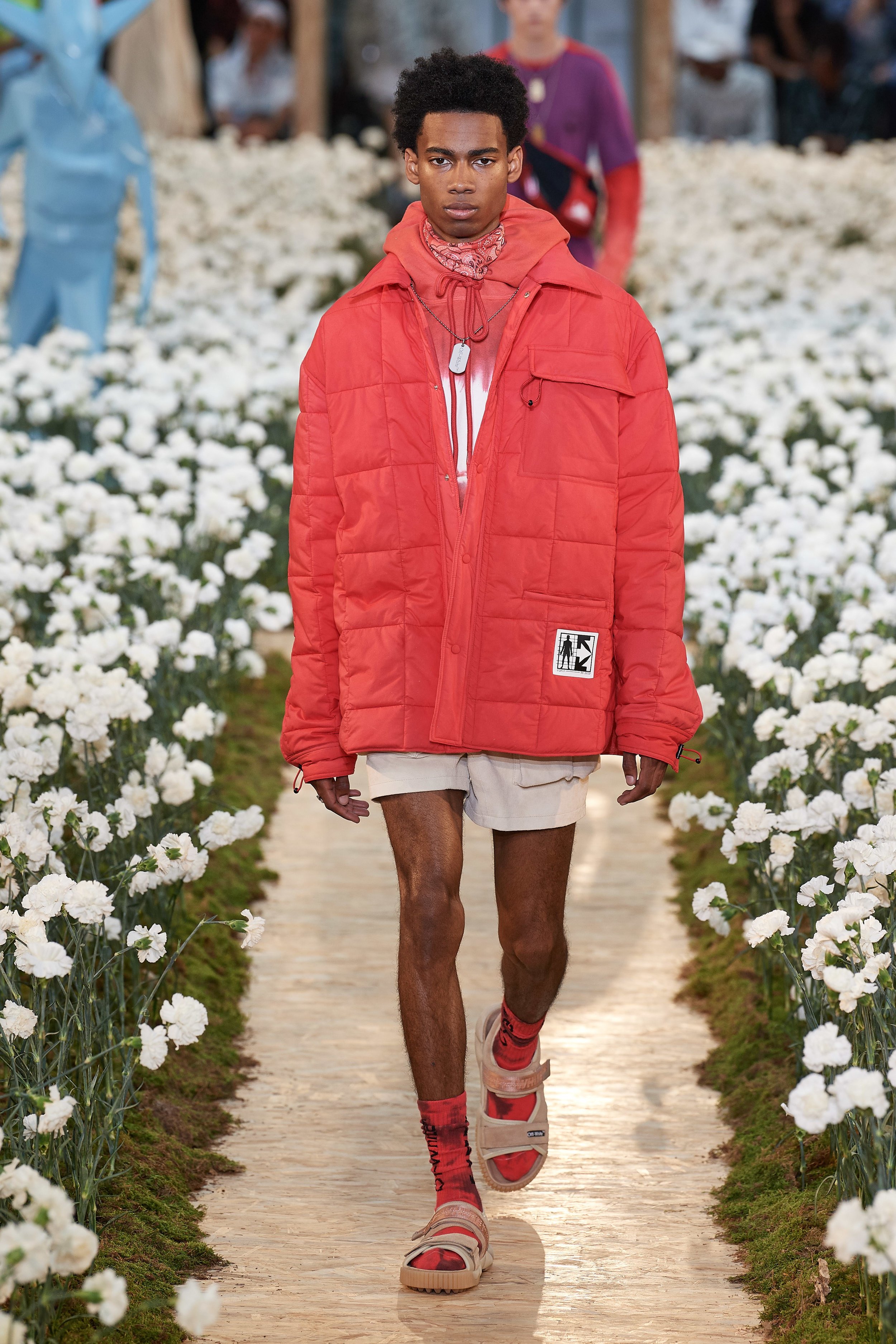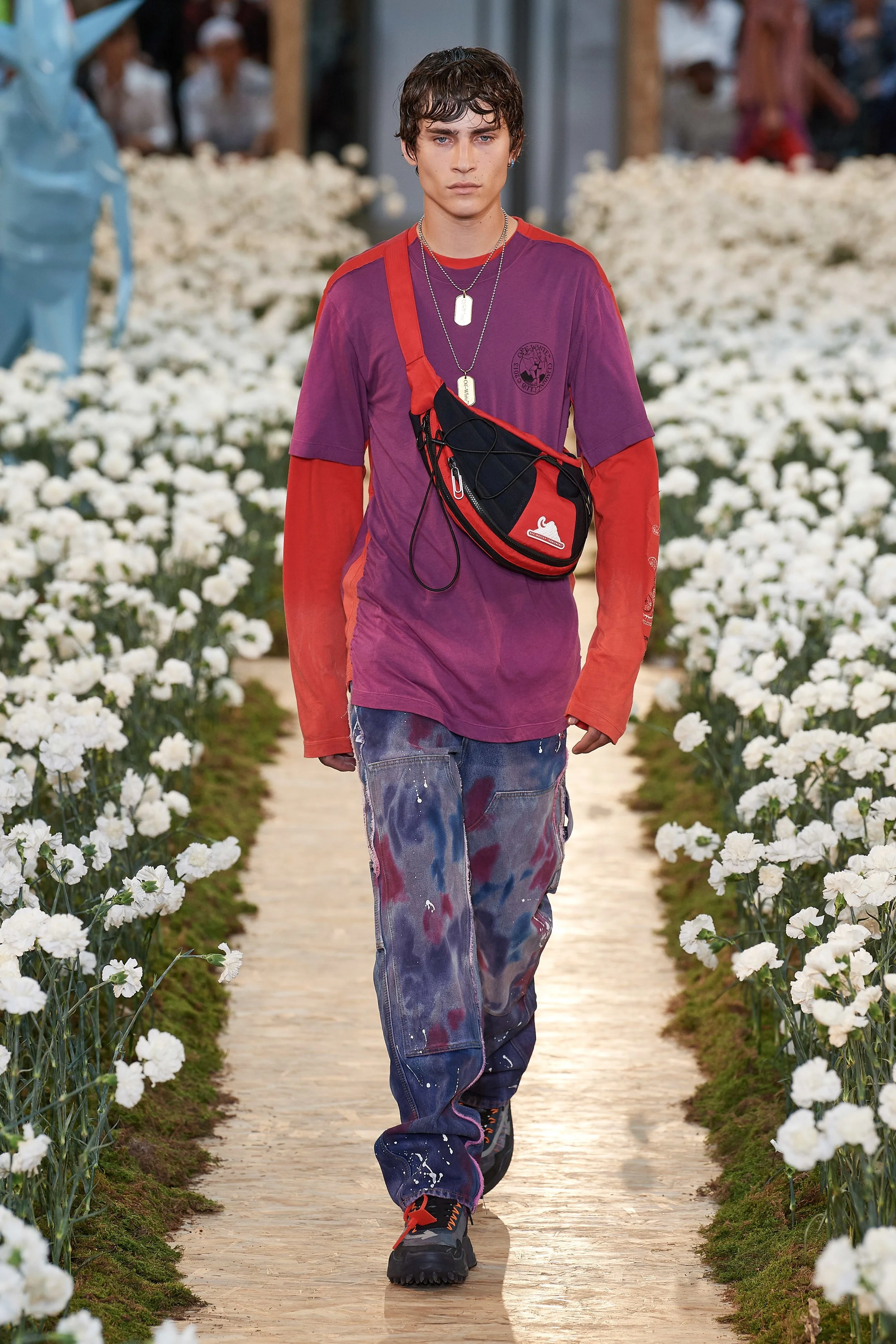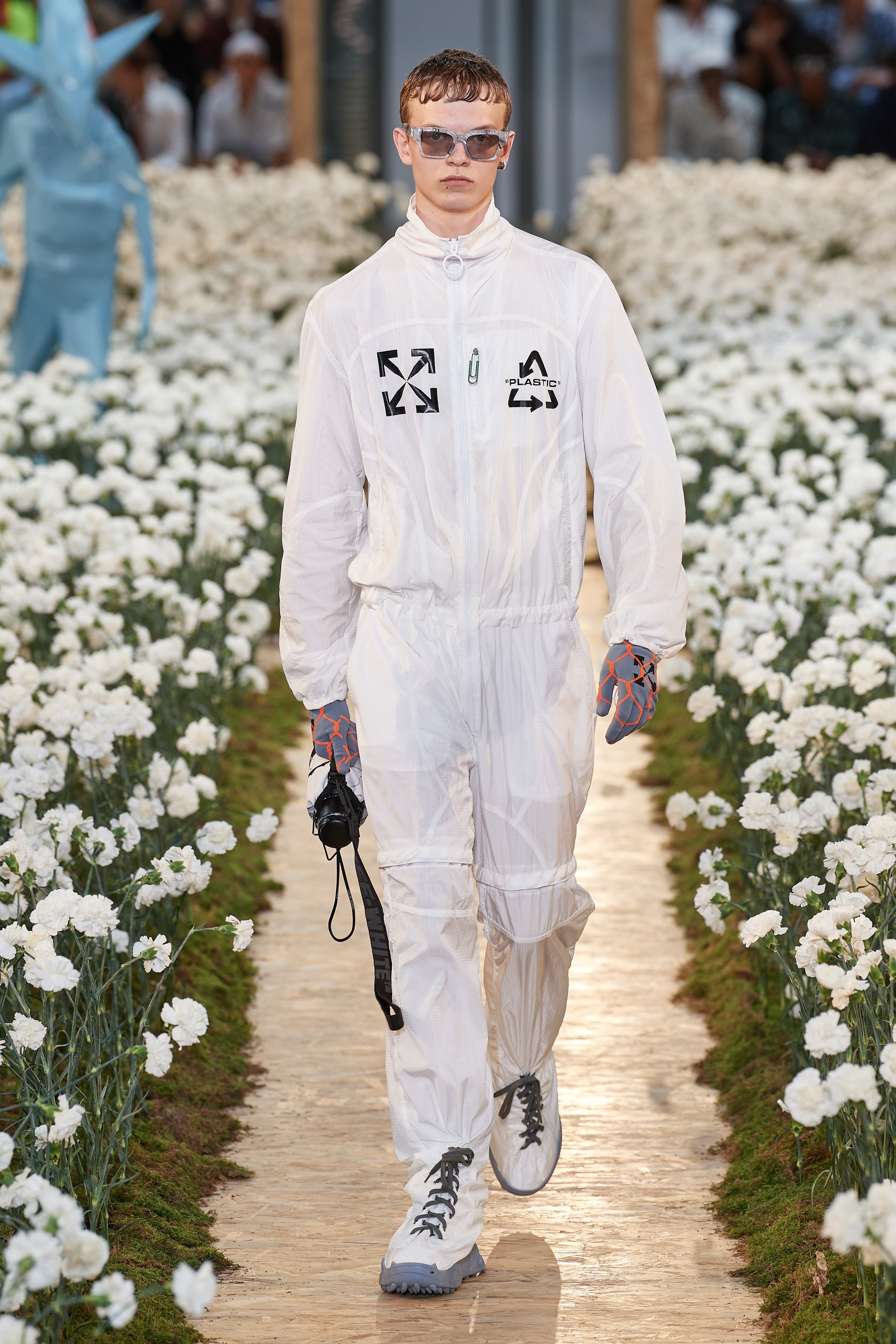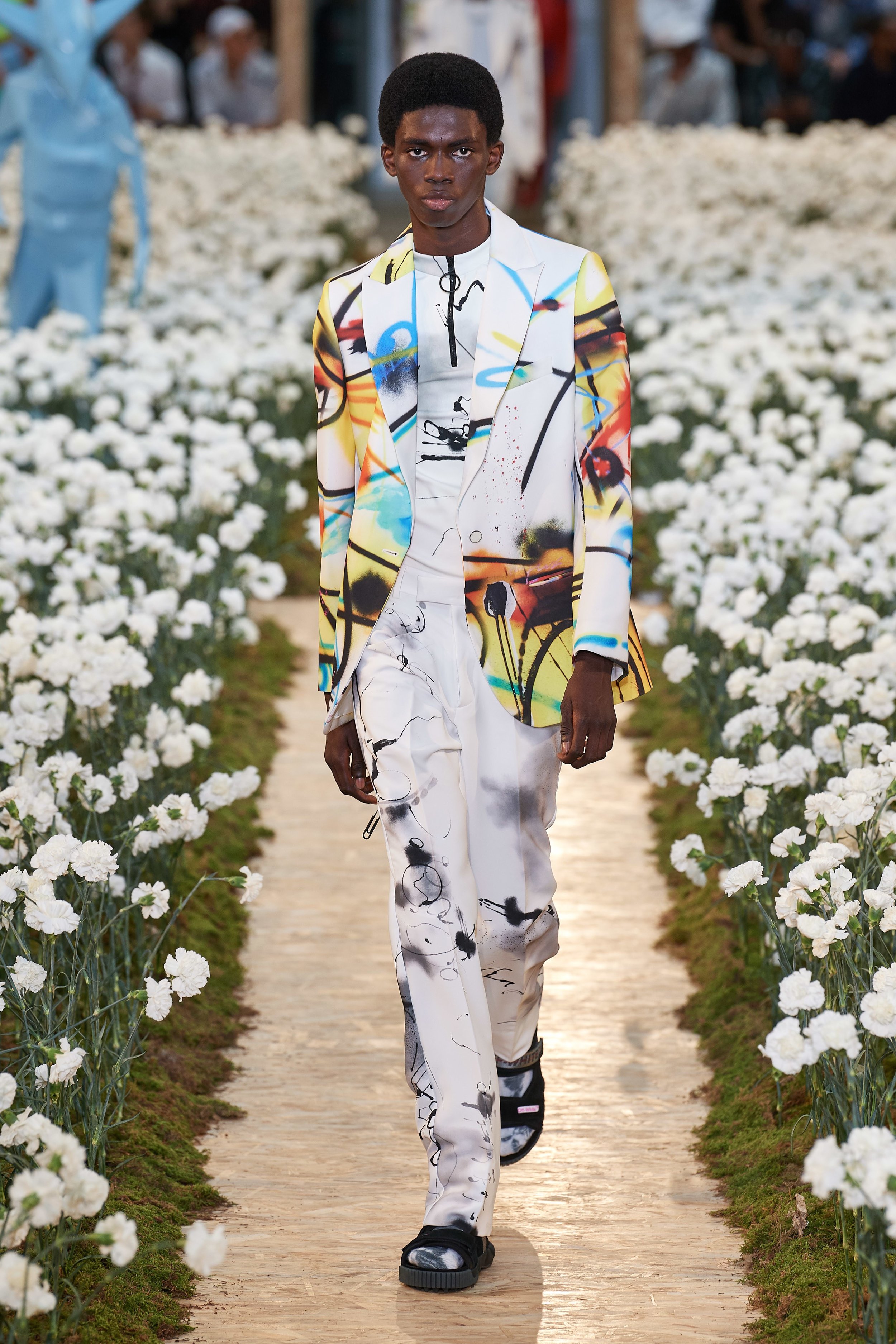When Virgil Abloh announced his Louis Vuitton collaboration with Nigo in December, he gave props to the Japanese streetwear pioneer. “Me being at Louis Vuitton is directly attributable to work Nigo’s done in the past,” Abloh said. “A collab project with him—it puts his work in the right context.”
The French luxury goods house famously partnered with Supreme in 2017, when Kim Jones was still LV’s menswear designer, but this hookup is different. There are no logos for Nigo’s brand, Human Made, on these clothes and accessories. In fact, there’s not much streetwear in the collection at all. “Let’s not do the expected,” is how Abloh characterized the interaction between himself and his mentor and friend.
That rings true with a statement Abloh made in an interview Dazed published shortly after the Louis Vuitton and Nigo project was announced. “I would definitely say it’s gonna die, you know? Like, its time will be up,” was how Abloh summed up streetwear’s fate at the time. As offhand as the comment was (see below), it stirred up quite a lot of internet talk in the industry and beyond. Three months later, Abloh has some new thoughts on the topic. He shared them, along with photos of his collaboration with Nigo, exclusively with Vogue.
Tell me about your friendship with Nigo.
He’s among the first real mentors I had in fashion. Since my trajectory was different, had I been a quote, unquote traditional designer, I might’ve gone to New York and apprenticed under Donna Karan. But since streetwear is a new genre of fashion design, those earliest mentors, the Yves Saint Laurent or Balenciaga of streetwear, it’s Nigo, it’s James Jebbia, who founded Supreme. They took what was organically happening within culture—skate and street brands—and they made hard-core brands from that.
Nigo, I was fortunate over 15 years ago to have met him in Japan. He took us under his wing and showed us the ropes of how he was building the brand A Bathing Ape at the time.
What was the process of working with him like?
We met in his studio [in Tokyo]. He has a completely vertical fashion brand with Human Made. In one building, he designs, does the photo shoot, does the manufacturing. I was impressed by that. We had subsequent meetings in my studio in Paris. They were really hands-on. Our strongpoint is the art direction of the concept. What people might be most surprised by is that for two guys known for streetwear history and ability, the collection is completely the opposite. That was our starting point: Let’s not do the expected. Let’s not put streetwear in a box. That’s the epiphany within the collaboration.


